Music is the universal language
“Glory to God in the highest heaven, and on earth peace to those on whom his favor rests.” - Luke 2:14
Premier Guitar
Exhibition of Iconic Bass Collection from U2's Adam Clayton
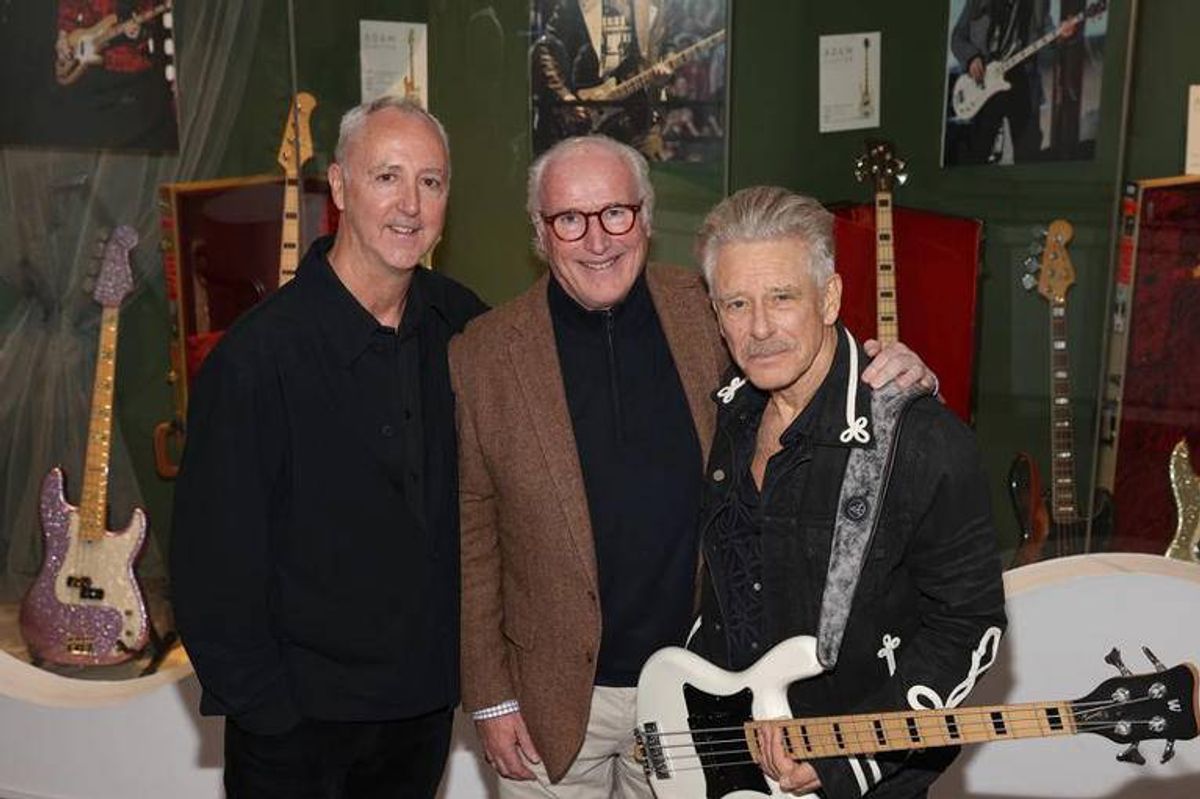
Julien’s Auctions today announced the unveiling of 18 bass guitars from Adam Clayton’s extraordinary personal collection in a first-ever exhibition in Ireland titled “Played, Worn, & Torn Featuring The Adam Clayton Collection.”
The exclusive three-week exhibition celebrating the U2 bassist and this collection of 18 iconic bass guitars is open to the public at The Museum of Style Icons in Newbridge, Co Kildare, Ireland from today until November 9th.
Following the exclusive three-week exhibition run in Ireland, the collection will head to Nashville where it will be auctioned at the industry’s most anticipated music memorabilia event of the year “PLAYED, WORN, AND TORN,” taking place over two days - Thursday, November 20th and Friday, November 21st 2025 - at the Musicians Hall of Fame & Museum in the historic Municipal Auditorium and online at juliensauctions.com.
Experience the legendary bass-playing journey of Adam Clayton as Julien’s, the industry-leading music memorabilia auction house, in partnership with the bass icon and co-founding member of one of the greatest rock and roll bands of all time, U2, brings together 18 phenomenal axes from his personal collection at The Museum of Style Icons, home to the world’s finest collections of style, fashion and pop culture artifacts. For the first time ever, the largest curated collection of Clayton’s guitars will be exhibited in U2’s native Ireland.
Adam Clayton said – “I’m fortunate enough to have owned many wonderful instruments in my life and I have amassed a very personal collection of basses over the last 40 years. They have all become favourites for one reason or another, a reminder of a particular tour or recording session. I return to them time and time again, it’s a very special relationship, I can’t really explain it…
My only regret is that I don’t get to play them all as often as I would like, a musical instrument needs time and attention… I’ll be sad to see these basses go but this is an opportunity to give each and every one of them a new home in the care of a new owner. And maybe they can become someone else's favourite.”
This remarkable collection of Adam Clayton's illustrious basses, stage-played through the different eras and continents of U2's record-breaking globe-spanning tours, is set to make history once again in this once-in-a-lifetime opportunity to potentially own a piece of the 22-time Grammy Award-winning artist and Rock and Roll Hall of Famer’s legacy. Over 20 items from Adam Clayton’s personal collection, including music instruments, gear, memorabilia and more, will be offered for the first time at auction, with a portion of the proceeds benefiting MusiCares, the leading music charity supporting the health and well-being of the music community.
Highlights include: Clayton’s 2014 Sherwood Green Fender Adam Clayton signature Jazz Bass, played during U2’s Innocence + Experience tour stops in 2015, notably in Dublin, Belfast, Paris, Glasgow, London, Koln, Antwerp, Barcelona, Berlin, Stockholm, Amsterdam, Turin, NYC, Boston, Toronto, Chicago, Montreal, Denver, Los Angeles, Phoenix, San Jose, and Vancouver (estimate: $40,000-$60,000); his 200 Lakland Joe Osborn J sunburst bass, played during the U2’s Vertigo Tour for their classic hit “One,” notably in Dublin on August 27th, 2005 (estimate: $20,000-$40,000); a 2010 Gold Sparkle Fender Adam Clayton Precision Bass deemed a “mistake” by Clayton’s guitar technician due to the Jazz Bass decaled headstock (estimate: $40,000-$60,000); Clayton’s stunning U2 360 Tour 2010 Warwick Gold Reverso electric basses (estimate each: $20,000-$40,000); Clayton’s prized Fender Jazz Basses ranging from 1960s to 1970s models in Sunburst, Ice Blue Metallic, Lake Placid Blue; and more!
Exhibition:
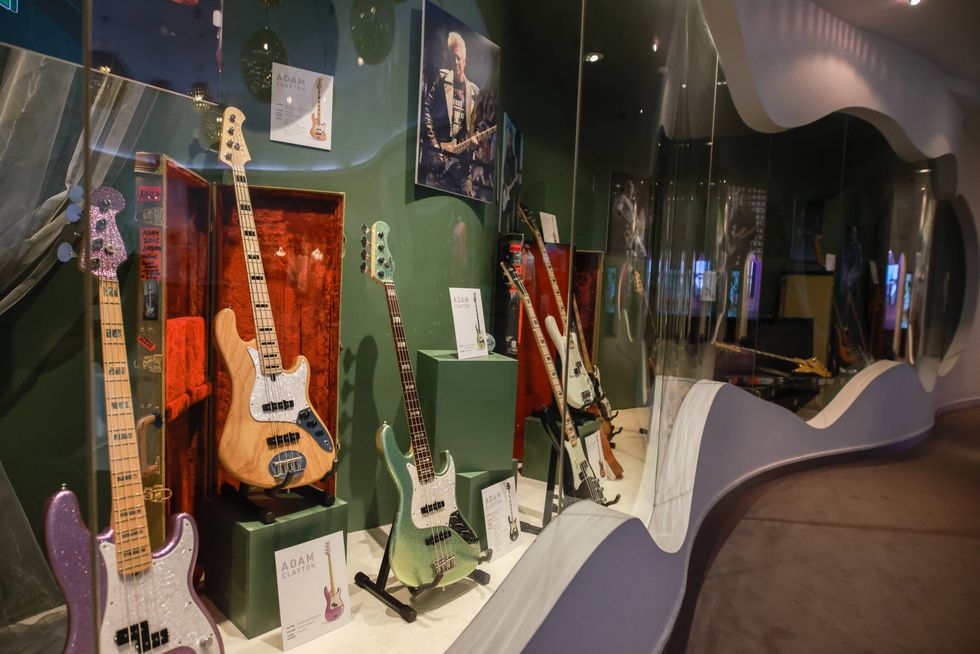
When: October 20th – November 9th, 2025
Where: The Museum of Style Icons in Newbridge Silverware Visitor Centre, Athgarvan Rd, Kilbelin, Newbridge, Co. Kildare, Ireland
Opening Times: Monday to Saturday 9am-5pm and Sunday & holidays 10am-5pm
Information: https://visitnewbridgesilverware.com/about-the-museum-of-style-icons
LIVE AND ONLINE AUCTION
Musicians Hall of Fame & Museum 401 Gay Street Nashville, Tennessee 37219
Thursday, November 20th
Session: 10:00 a.m. Central Time
Friday, November 21st
Session: 10:00 a.m. Central Time
For more information please email - info@juliensauctions.com or call 310-836-1818.
Registering to Bid
Registration is required to bid in this auction and can be done in person on the day of the auction, or online before the sale at the Julien's Auctions.
For inquiries, please email info@juliensauctions.com or call 310-836-1818.
Placing Bids
There are four ways to bid in Live Auctions:
- Bid with Julien's Auctions online.
- Bid over the telephone through an auction house representative.
- Bid in person in the room at our auction events.
- Bid in advance by absentee bid. Absentee bid forms are available by calling 310-836-1818
Supercool Pedals releases “The Cutback”
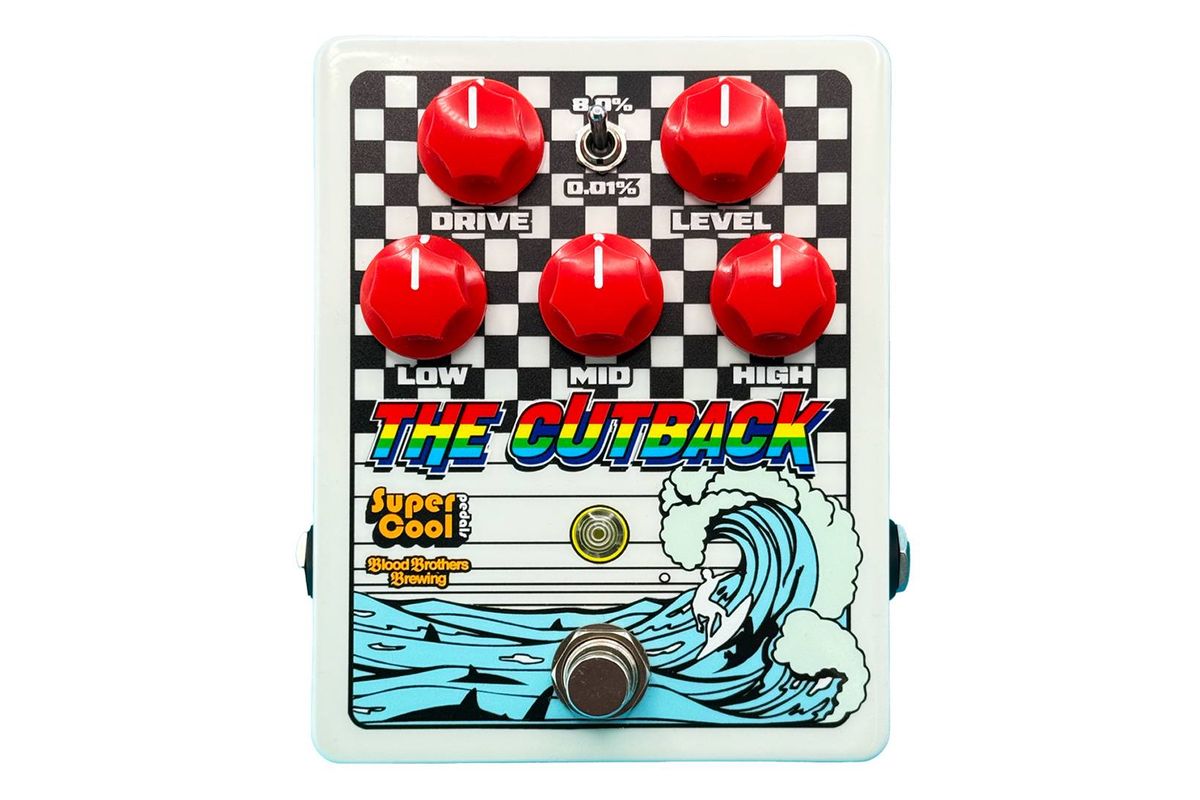
Supercool Pedals has announced the eleventh pedal in their growing lineup: The Cutback – a versatile preamp-style overdrive pedal inspired by the legendary DOD 250 and the golden era of 1980s Australian surf culture.
Carefully designed to deliver a wide array of sounds from warm preamp tones, natural amp-like breakup, all the way to searing distortions, The Cutback is a perfect catch-all drive pedal for any guitarist, no matter the genre of music or style of playing. The Cutback boasts two selectable gain modes: 0.01% for dynamic boosts and responsive overdrives, and 8% for more saturation and intense distortions, as well as a carefully-tuned active 3-band EQ for subtle or dramatic tone shaping.
Developed in collaboration with Blood Brothers Brewing, The Cutback launches alongside the Cutback Aussie Style Ginger Beer — a limited-edition brew sharing the pedal’s name, design, and adventurous spirit. Together, the two celebrate the art of sound, sun, and brewing with a shared sense of surf-inspired fun.
The Cutback highlights include:
- Based on the iconic DOD 250 overdrive/preamp circuit
- Dual GAIN modes (0.01% and 8%) for low or high distortion modes
- Active 3-band EQ (LOW, MID, HIGH) for comprehensive tone shaping
- Wide array of gain uses, from preamp, boost, overdrive, and distortion
- Captivating and nostalgic 1980’s Surf Design
- Glows in the dark for maximum radness!
- True Bypass switching with standard 9v center negative power supply
- Designed and assembled in Canada
The Cutback is the 11th installment in the Supercool pedals lineup with a street price of $199 USD, and is available for purchase with worldwide shipping through www.SupercoolPedals.com as well as in select independent retailers.
Xvive Launches Charging Case for the A58 Guitar Wireless System
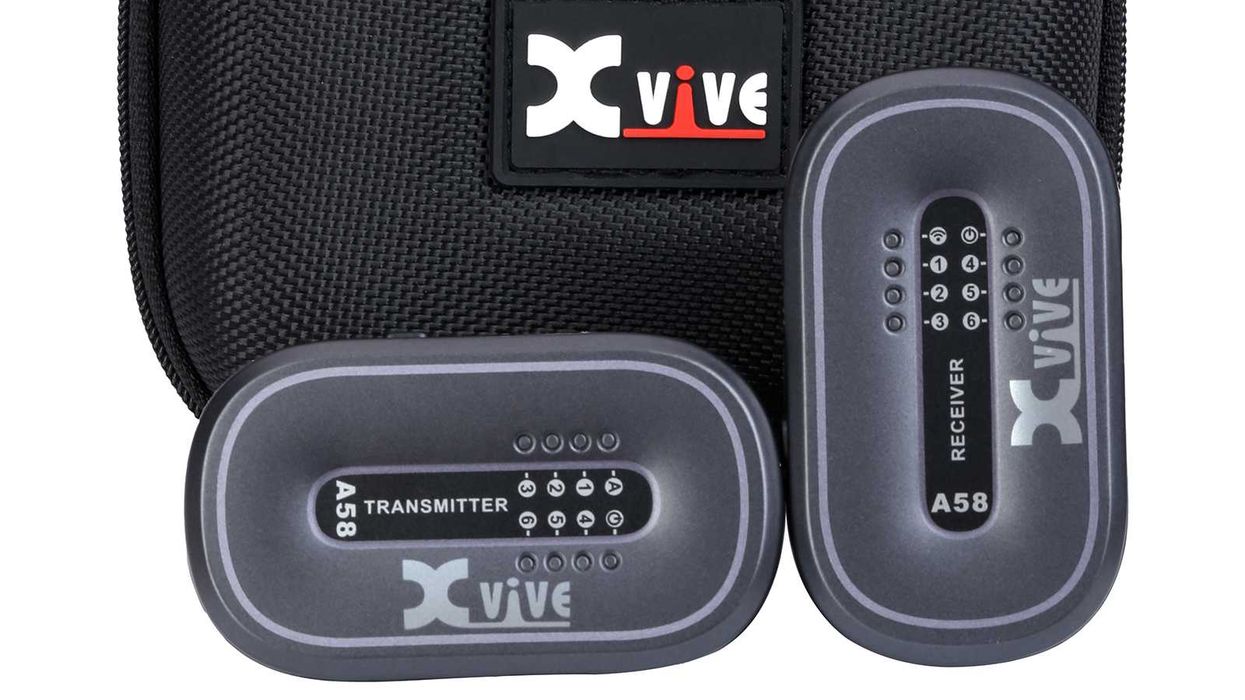
Xvive is building on its successful 5.8 GHz A58 Guitar Wireless System with the new BCA58 Charging Case, which is both a power bank and a custom-molded, highly protective carry case for the A58 system. BCA58 boasts enough onboard power to provide up to two full charges or multiple top-ups for the A58 Transmitter and Receiver. Also now on offer is the AC58 Guitar Wireless System, which pairs BCA58 with the A58 System.
The BCA58 is built with durable 1680D fabric and high-strength ABS engineering plastic, offering excellent impact resistance and wear protection. Its built-in 5000 mAh lithium battery can be fully recharged in 5 hours using any standard USB 5V/2A charger. The case can charge your A58 set anywhere, anytime—at home, on the way to a gig or between sets. BCA58 features auto full-charge detection and auto shutoff. Simply place your Transmitter and Receiver into the designated slots, and charging begins automatically. Once the units are fully charged, the case stops charging to protect battery health and extend lifespan.
The A58 Guitar Wireless System was launched in the summer of 2024 as a followup to Xvive’s popular U2 Guitar Wireless System. Operating on the 5.8 GHz wireless frequency allows A58 to avoid interference from other devices on the crowded 2.4 GHz band. A58 also supports both passive and active pickups, and its True Diversity receiver scans the available wireless channels and automatically connects using the most stable option. Guitarists and bassists already using the A58 System can now protect and charge their wireless units with BCA58; new A58 users can go all-in by choosing the AC58 system, combining a rock-solid, great-sounding wireless with a reliable charging and storage solution.
The BCA58 Charging Case is not available from US retailers at this time. The AC58 Guitar Wireless System retails for $189.99 USD and is available now from Xvive retailers and online dealers worldwide.
Official product pages:
BCA58: https://xvive.com/audio/product/bca58-charging-case
AC58: https://xvive.com/audio/product/ac58-guitar-wireless-system
Stompboxtober 2025: Electro-Harmonix
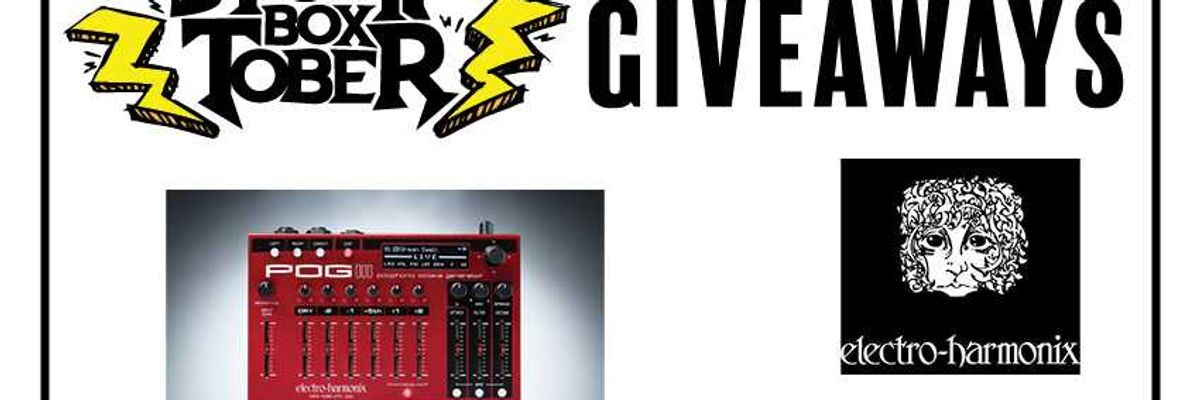
Enter today’s #Stompboxtober giveaway to WIN the all-new Electro-Harmonix POG3 — the most powerful polyphonic octave generator ever. With lightning-fast tracking, stereo mixing, MIDI + expression control, and 100 presets, the POG3 unlocks endless creative potential for guitarists, synth fans, and sonic explorers alike. Don’t miss today’s chance — and check back tomorrow for more pedal magic!
Stompboxtober 2025 - Win Pedals All Month Long!
EHX POG 3
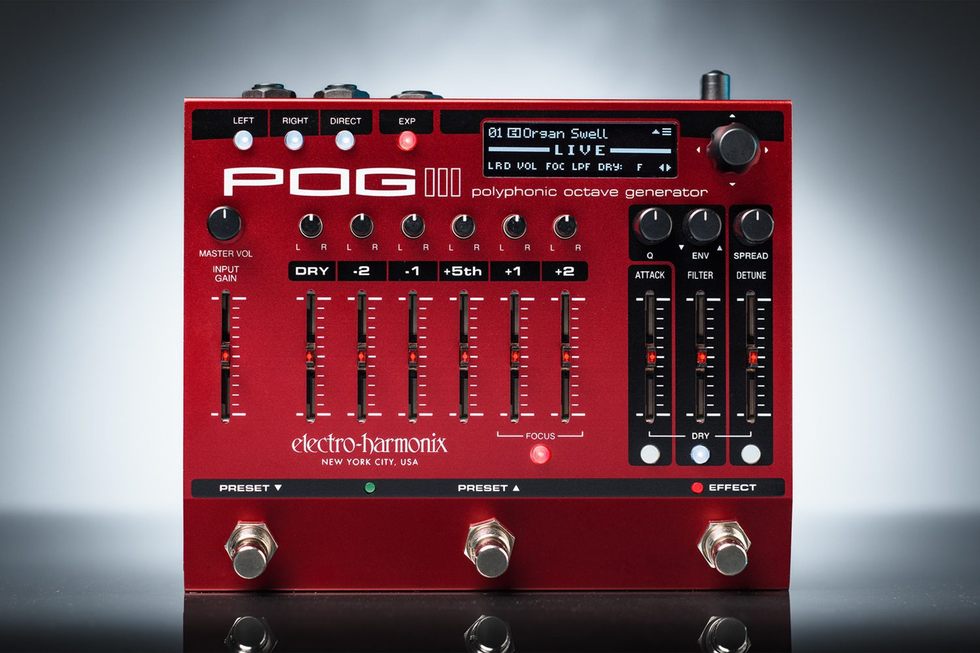
The world’s best octave effect just got better! The POG3 is the most powerful pedal in Electro-Harmonix’s revered line of polyphonic octave generators that continues to inspire and captivate musicians of all styles. At its core, the POG3 delivers lightning-fast tracking and perfect polyphony over 4 octaves with smoother tone and performance than ever before. From 12-string jangle to 6-voice drawbar organ sounds, the POG3 delivers an endless possibility of tone creation. The pedal has received many updates that further expand its tone shaping possibilities to enhance your performance on stage and in the studio.
Featuring 6 voices including DRY, -2, -1, +5th, +1, & +2, you can mix each with individual sliders and create enveloping stereo effects with dedicated pan knobs and selectable LEFT/RIGHT/DIRECT outputs. The effects section has been expanded to offer envelope control and adjustable Q for the new multi-mode FILTER, enhanced DETUNE section with SPREAD, and individual DRY effect selection, plus the famous ATTACK slider for subtle or dramatic swell effects. All voices, effects, and additional features are now controllable via expression and MIDI for even more creative control. Unlock new expression effects including Freeze, Glissando, Volume, Filter, X-Fade, and Warp with advanced programming and performance controls. The INPUT GAIN slider is an old friend from the original POG that can add girth and dirt to your tone mix.
With all of this fresh tone creation power on tap, additional storage and editing options simply workflow and sound saving capabilities. 100 onboard presets can be saved and rearranged easily thanks to the POG3’s high-visibility OLED display and NAVCODER knob. The EHXport desktop app also allows for easy preset storage and organization as well as streamlined preset editing on your PC or MAC.
Discover your most creative self with the POG3!

Electro-Harmonix POG3 Polyphonic Octave Generator Pedal
IK Multimedia launches TONEX Signature Bass Collectionand two TONEX Bass pedals
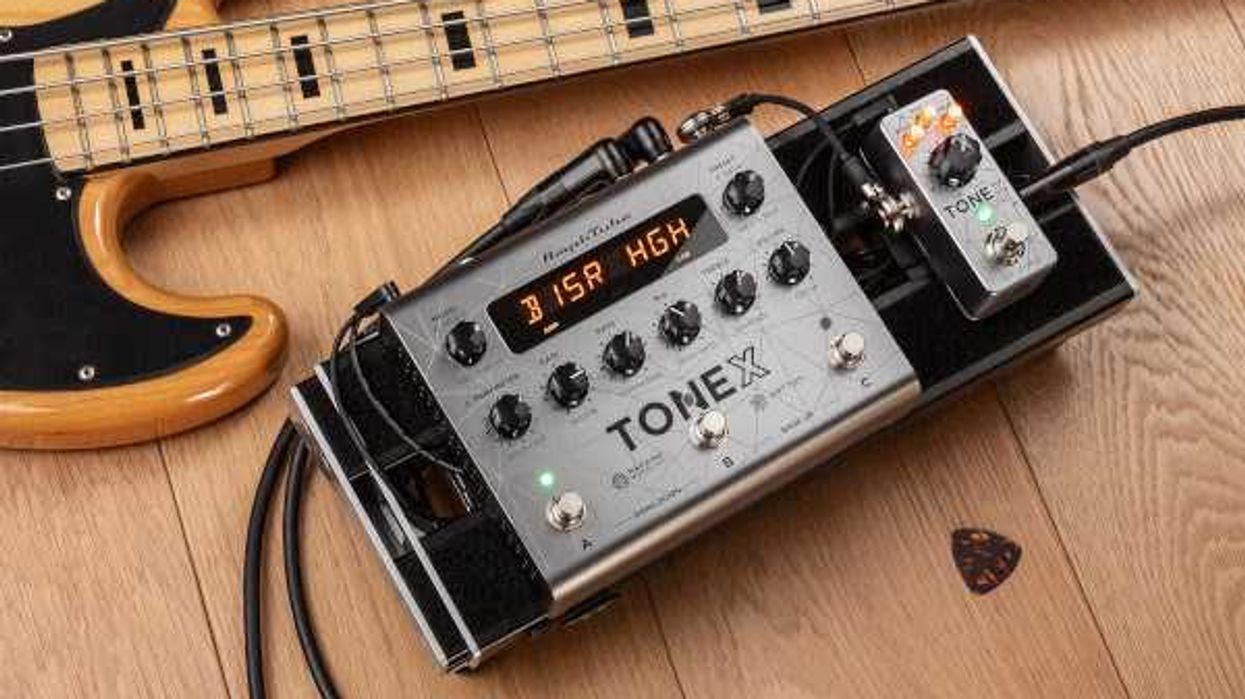
IK Multimedia launches TONEX Bass Editions, which include a new TONEX Signature Bass Collection and two hardware additions to the TONEX Ecosystem specially for bass players: TONEX Pedal Bass Edition and TONEX ONE Bass Edition, both preloaded with gig-ready Tone Models and presets from the collection.
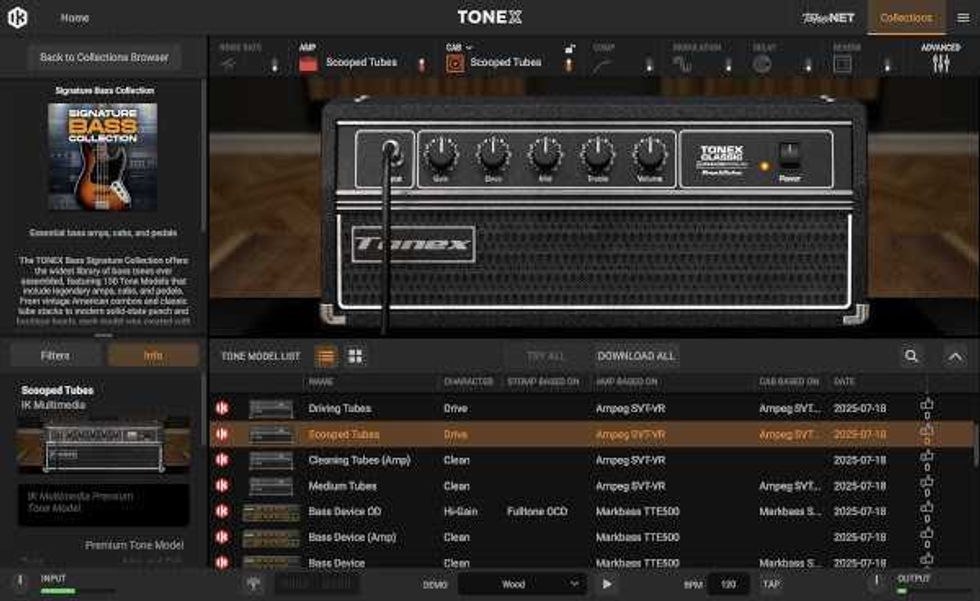
TONEX Bass Overview
- A dream collection: Legendary bass amps and pedals captured at their sweet spots.
- Superior sound: Created with the new TONEX Modeler for clarity, punch, and feel.
- Phase-tight blend: Perfect dry/wet phase correlation keeps fundamentals strong while adding grind-perfect for blending DI + amp tones.
- Iconic sounds onboard: From vintage tube thump to modern drive, Tone Models deliver the precise response of the originals.
- With added tools: Exclusive VIR™: multi-IR cabinets and custom IR Loader, tuner, and 15 pre/post FX
- Signature look: Premium aluminum-silver enclosure with all-over neural design.
- Included software: TONEX Modeler, TONEX Editor, and TONEX CS
- ToneNET expansion: Browse, search, and demo thousands of Tone Models, including Signature and Tone Partner Collections
TONEX Signature Bass Collection
Discover a curated collection of 150 Tone Models that cover every style, from clean DI-friendly amps and classic tube stacks to modern solid-state punch and popular bass drives. Highlights include captures based on Ampeg SVT-CL/VR/2-Pro, Fender Bassman models ('53, '59, 100, 300), Markbass, Orange AD200, Gallien-Krueger RB/2001/Fusion, Trace Elliot, Darkglass heads and pedals, Tech 21 SH1/PSA/DP-3X/YYZ, ProCo RAT variants, and more.
From Studio to Stage
Powered by the new TONEX Modeler, each capture benefits from improved Dry/Wet phase correlation, resulting in a more natural, phase-coherent blend of DI and processed signals. This provides clear low-end fundamentals along with drive or saturation, helping the bass sit perfectly in any mix with clarity, punch, and authentic character.
TONEX Pedal Bass Edition
Featuring on-stage controls for easy tone switching, the TONEX Pedal Bass Edition comes preloaded with 150 bass-optimized Tone Models and presets, ranging from vintage tube sounds to modern, high-fidelity punch.
Presets are organized into 50 banks, each centered around a legendary bass amp and offering three tone model options per bank. 15 onboard effects are available to enhance or customize any tone model, giving players an unlimited variety of tones for songs of any genre.
TONEX ONE Bass Edition
TONEX ONE Bass Edition is perfect for home setup and easy transport in a gig bag. It offers 20 ready-to-use bass presets in a compact pedal, featuring legendary amp models that range from vintage smooth tones to modern punch and grit.
Each preset is designed to deliver a complete rig with optimized tones and onboard effects. While the pedal can store 20 presets at once, it also provides full access to the entire 150-model Bass Collection. Users can conveniently load their favorites using the included TONEX Editor or create custom Tone Models with TONEX Modeler for Mac/PC.

Customize for the Stage
For seamless editing, TONEX pedals include TONEX Editor for Mac/PC that enables real-time adjustments using a connected pedal. It provides access to the user's entire TONEX library, including Tone Models, presets, and ToneNET, enabling quick loading of favorites for auditioning and saving to a designated hardware slot on your pedal.
Capture your rig
TONEX software and the new Modeler can be used not only to model any rig but also as a standalone app or a plug-in integrated with any DAW to deliver the exact tone for live and studio use.
Designed and Crafted in Italy
Both TONEX pedals for bass feature a rugged aluminum chassis for reliable performance. With 24-bit, 192 kHz processing, an extremely wide 5 Hz - 24 kHz response, and a whisper-quiet 123 dB noise floor, they ensure any bass sounds as good as it ever has- even before it hits TONEX's incredible modeling.
It's About Time
The TONEX Bass Signature Collection and TONEX Bass Edition pedals offer players a modern and incredibly versatile way to add classic bass tones to their live rig and take center stage.
Pricing and Availability
TONEX Signature Bass Collection, TONEX Pedal Bass Edition, and TONEX ONE Bass Edition are now available from IK authorized dealers worldwide and through the IK Multimedia online store, at the following prices:
TONEX Signature Bass Collection - $/€99.99* - 150 Tone Models curated for bass covering every style.
- TONEX Pedal Bass Edition - $/€429.99 - Preloaded with 150 brand-new, gig-ready presets. Includes TONEX Signature Bass Collection, TONEX CS, TONEX Modeler, and TONEX Editor. AmpliTube 5, AmpliTube SVX 1 & 2 Collections.
- TONEX ONE Bass Edition - $/€199.99 - Preloaded with 20 brand-new, gig-ready presets. Includes TONEX Signature Bass Collection, TONEX CS, TONEX Modeler, and TONEX Editor. AmpliTube 5, AmpliTube SVX 1 & 2 Collections.
For complete details and information about the TONEX Signature Bass Collection and pedals, and to hear the tones, please visit: www.ikmultimedia.com/tonex-bass
Blackstar Debut Bass 25 Review
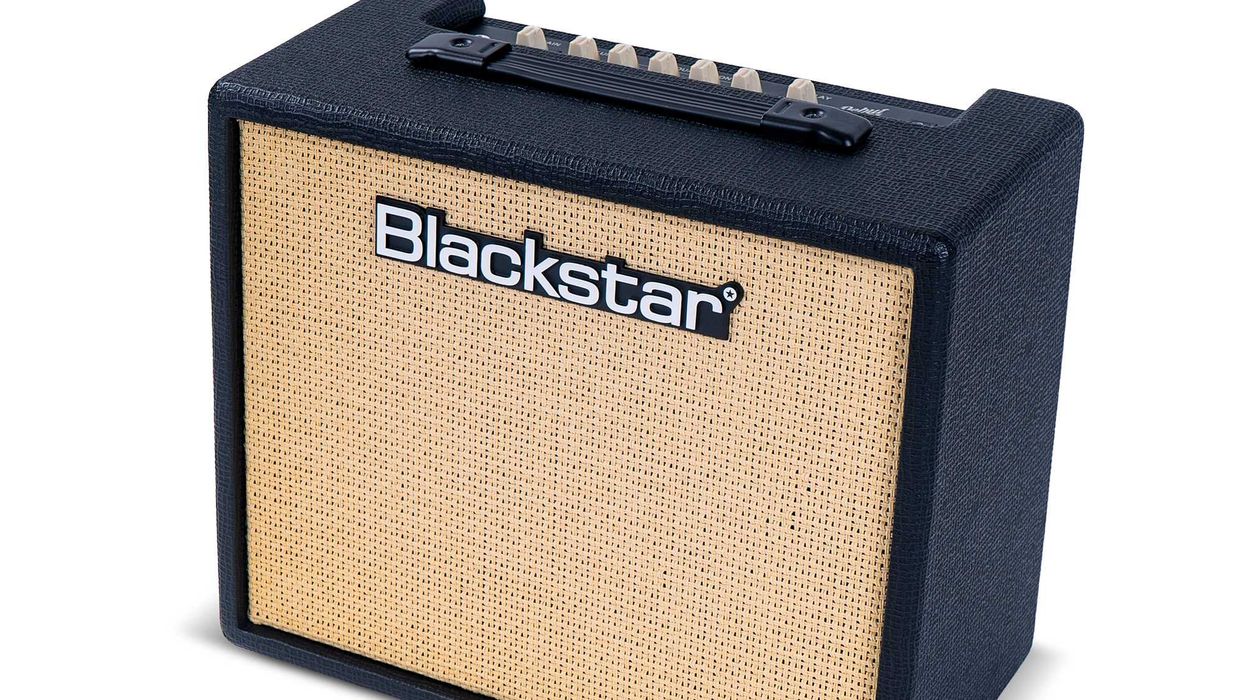
The bedroom or the garage: In a game of Family Feud, those humble locations would likely be the top answers for the question “Where do music careers begin?’ I was relegated to the latter for the sake of my parents’ sanity. But nothing stops a career cold like a garage in winter, so an amp that ensures you can sound good while sharing tight quarters is a truly valuable thing. Blackstar Amplification’s Debut Bass 25 fits that bill.
Small for All
The Debut Bass 25’s small-space friendliness starts with its compact footprint. At 14" high and less than 10" deep, it’s unobtrusive to say the least. The control panel, with just volume, low, mid, and high EQ controls as well as a push-button boost, is about as simple as they come. The knobs themselves are smooth and accurate, with the feel of a high-end amplifier. Two 1/8" jacks accommodate headphones and an aux in for running backing tracks. And for additional tone shaping and punch, Blackstar included an OD switch that adds more depth.
Sings at Sensible Volumes
I tried out the Debut 25 using a Bluesman Vintage El Dorado (a passive J-style bass) and a Warwick Streamer I with active pickups. Beginning in more traditional style with the El Dorado, I set the volume relatively low and the EQ controls around the mid-point in their range. Here, I was struck by how fully the sound enveloped me—and by the amp’s ability to preserve the El Dorado’s character with such clarity. By dialing the midrange back a couple notches, and boosting the bass by the same amount, I found a sweet spot that made the El Dorado sing—all at a volume suited for the woodshed.
When the OD switch is engaged, the EQ is still effective and can shape big tones that move from swampy to in-your-face.
Active pickups pair nicely with the Debut 25 too, if the Warwick is any indication. I remained impressed with the range within the EQ controls. With the Warwick, the most pleasing tones came with the high-frequency control kept below halfway—push it much further, and things get a little too crisp for my taste. When the OD switch is engaged, the EQ is still effective and can shape big tones that move from swampy to in-your-face. The amp can also be loud with or without the OD in the mix. More than once, I had to remind myself that the amp only houses an 8" speaker, because when I turned the volume up my floor was quite literally shaking.
The Verdict
I’m glad the Debut 25 found its way to me. I confess, I haven’t plugged into a low-watt practice amp in a very long time, and all I can say is that I wish an amp this small, powerful, and tonally rich had been available when I was starting out. My only gripe might be the absence of a dedicated XLR out, which would extend the amp’s utility in live situations where sound re-enforcement is available. And while its modest $299 price tag is a bit higher than some of its competition, the Debut 25 is anything but ordinary. It offers a wide range of tonal colors, and can hold its own at any volume, whether you’re in the garage, bedroom, or beyond.
Best Damn Cable Co. Introduces Wireless Transmitter Cable
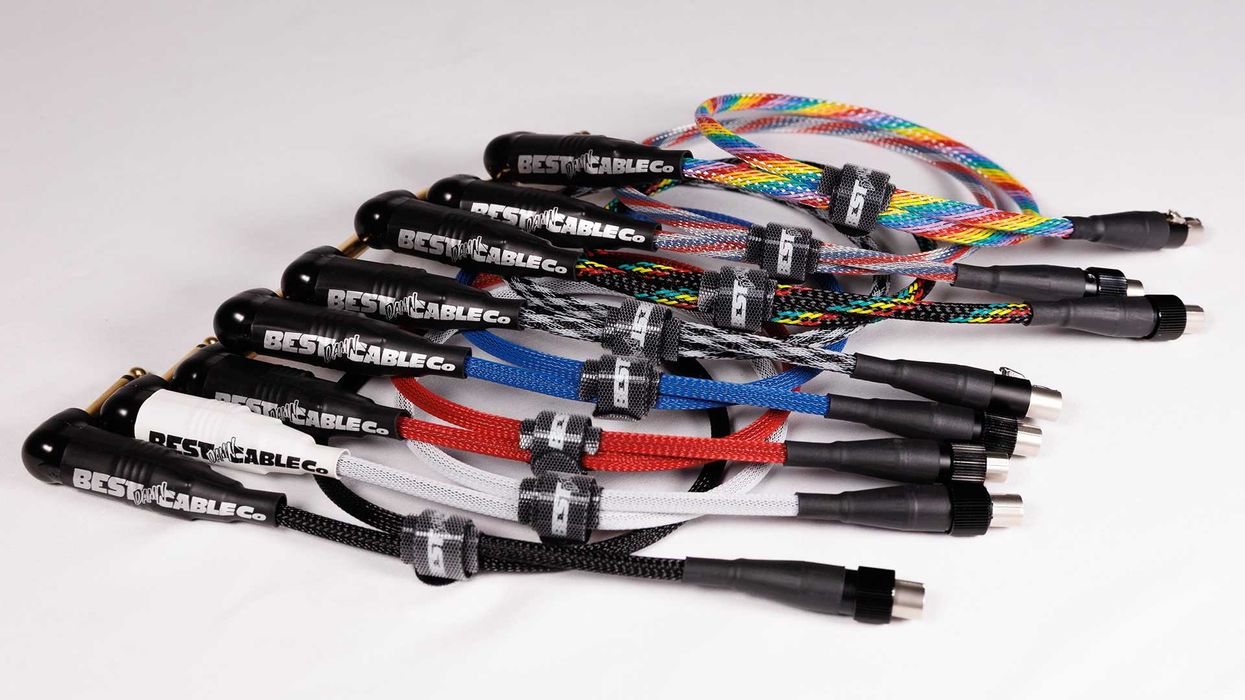
High-performance builder Best Damn Cable Co. has added to the company’s product offerings with a durable, pro-quality wireless transmitter cable line.
The new Best Damn Wireless Cables are designed and purpose-built for the gigging musician who needs a wireless transmitter cable that can stand up to the rigors of live performance, night after grueling night.
The Best Damn Wireless Cable boasts reliability, customization, and a lifetime warranty. Featuring options for all the top wireless system models – including Shure, Sennheiser, Line 6, Nux, and AKG – you’ll find the perfect cable for your rig.
Guitarists can get their Best Damn Wireless Cable with an array of options:
- Braided sleeving in 8 different colorways for durability, protection, and customization
- Three standard length options - 1.5 feet, 2 feet and 3 feet long
- Custom lengths available on request
- Straight or Right Angled Neutrik gold plugs
- Neutrik silentPLUG available on request
- Lifetime Warranty against defect and damage
All cables are built by hand, with love, and by musicians and guitarists that understand. The Best Damn Wireless Cable starts at $39.99 + shipping. Check ‘em out at bestdamncables.com.
My Surprising Journey with Vintage Fender Amps
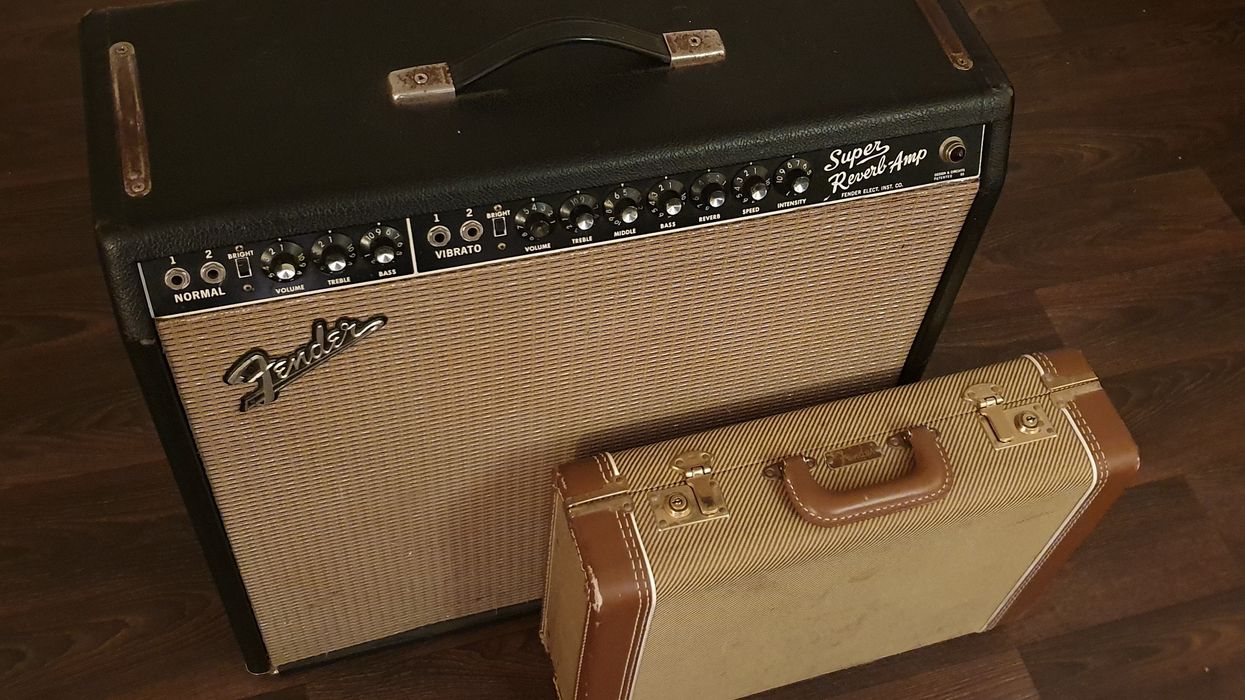
As an amp tech and vintage Fender amp collector for the last 30 years, I’ve been exposed to more guitars and amplifiers than I can possibly remember. But I do remember the best and worst ones. I’d like to share some ups and downs of my encounters with Leo Fender’s amps. I hope these examples inspire you to experiment and find your own joy with vintage Fender amps.
The Fender Super Reverb
In my 20s, I was all about maximum punch and output. I always went for efficient loudspeakers with a strong attack and a bassy punch. I still regret selling an almost-mint, transitional 1968 Super Reverb loaded with CTS alnico speakers in the late ’90s. It wasn't until 20 long years later that I started to appreciate these speakers after coming across similar amps.
My original amp, which first belonged to my brother, had a beautiful contrast between the brown, naturally aged grille cloth and the silver-sparkling aluminum frame around the speaker baffle. The CTS alnicos with the blue square magnet are famous for their low efficiency and vocal tone, with a dominant upper midrange and great touch sensitivity. They are perfect for that clean, touch-sensitive Mark Knopfler tone. These speakers, found in black-panel Supers and early silver-panels up to around 1970, are definitely worth trying out.
The Trouble with the Bassman
Next up is my complicated relationship with the black-panel Bassman. I had read a lot about it and knew it had a great reputation among both bass and guitar players. I first tried a 1964 Bassman, which was deafeningly loud. I found it almost impossible to dial in a warm tone. I thought the massive 2x12" enclosed cabinet with a pair of punchy Oxford 12T6 speakers was too much for a regular electric guitar. The attack was brutal from the diode-rectified 50-watt power amp with large power and output transformers. I also realized I’m dependent on reverb, which the Bassman lacked.
There wasn’t much I liked about the black-panel Bassman until I came across another model, an AB165, also from late 1964. I inspected the schematics and learned that the AA864 and AB165 circuits were different. The AB165’s “normal” channel uses an extra 12AX7 preamp tube, where both triode gain stages boost the signal. In the AA864, only the “bass” channel uses this preamp tube. This means the AB165 is capable of serious preamp distortion, but only if pushed hard, which still made it too loud.
“The attack was brutal from the diode-rectified 50-watt power amp with large power and output transformers.”
I then hooked up a 1x12" extension cabinet with an 8-ohm Eminence Reignmaker speaker that had a built-in attenuator. The impedance mismatch and attenuated speaker lowered the headroom significantly, allowing me to get heavily cranked tones at moderate levels—even quieter than a Deluxe Reverb, but with more distortion. With an SG plugged directly into the AB165, getting AC/DC tones was no problem. You can also push the AA864 into distortion this way, but it won’t deliver the same amount of preamp distortion.
The Vibrolux Reverb
Since I love Super Reverbs, I’ve owned and played many Vibrolux Reverbs, too. With two 10" speakers instead of four, plus smaller transformers, it’s a little brother to the tall Super Reverb. Its reduced weight and size are a big plus, but at the same time, the fewer speakers represent a risk worth mentioning. I’ve serviced several Vibroluxes with blown speakers, particularly Jensens and Oxfords, which have low wattage ratings. The weak paper cones and smaller coils of these delicate original speakers are easily damaged if you hit them with too much bass and volume from the 35-watt, 6L6-powered Vibrolux.
One time, I installed a 12" Eminence Swamp Thang along with a 10" Celestion Gold in an early-’70s Vibrolux Reverb—the original Utah speakers were too flat and bright for my tastes. I used the original baffle and simply drilled new holes for the 12" speaker screws. Those of you who are familiar with these speakers can imagine how much more powerful and punchy the amp became. The Swamp Thang, in particular, is famous for its chunky and fat tone—never muddy or brittle, no matter what I threw at it with guitars, pedals, and amp settings. When I had this amp, I used heavy .012-gauge strings and tuned down a half-step. The low-end response was impressive when I hit the bass strings and played 12-bar Chuck Berry rock ’n’ roll. I had a lot of fun with this amp, as it easily outperformed larger amps. For low-volume occasions, I simply disengaged the 12" speaker and kept my friendship with bandmates and the audience.
The Princeton Reverb
Finally, I have to mention the time I came across a great player’s silver-panel Princeton Reverb that taught me a few tricks I have used countless times. When I bought it, it had an ultra-light Celestion Century Vintage 12" neodymium speaker and a Deluxe Reverb output transformer. This Princeton Reverb was still super portable but played twice as loud as an original silver-panel equivalent. I regret selling this amp, and since then, I’ve had many Princeton Reverbs in my basement that have received the same mods for customers and friends. I’ve yet to hear of anyone who has rolled these amps back to original specs after trying these modifications.Kiss Legend Ace Frehley Passes Away at Age 74
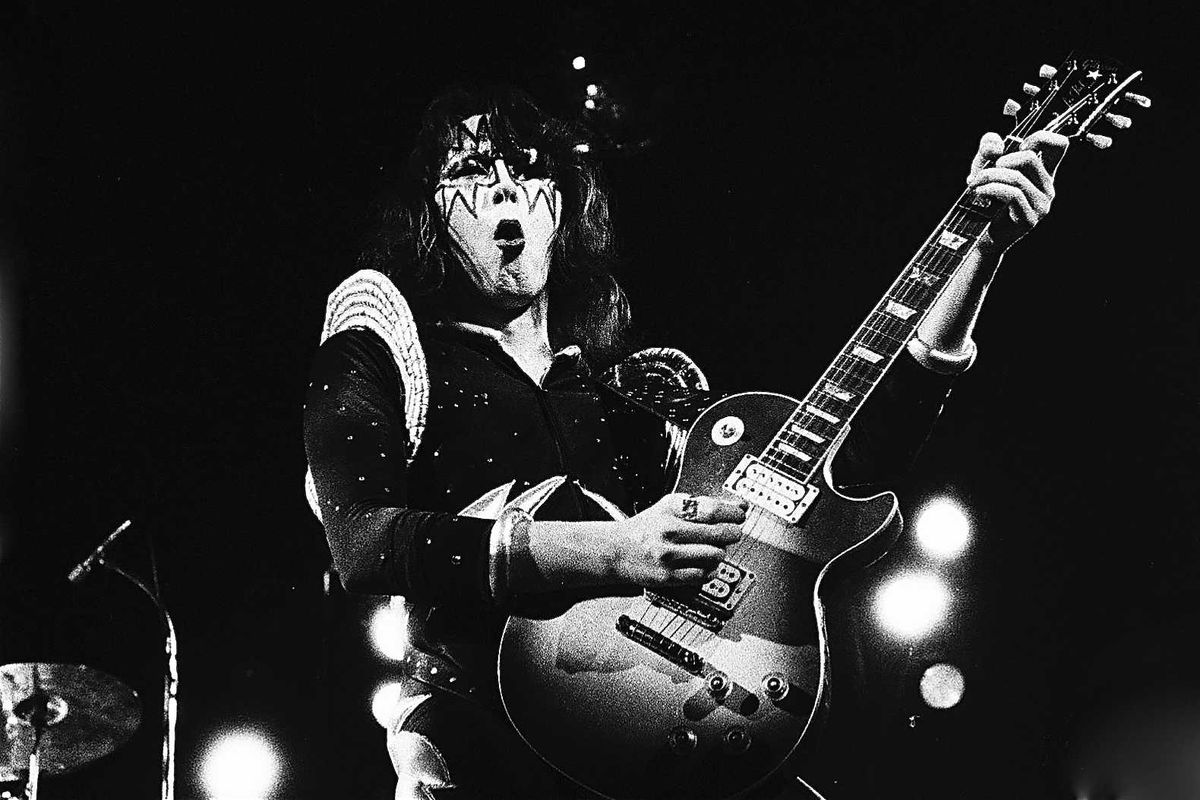
Ace Frehley, the Kiss guitar legend whose fiery playing and pyro-laden guitar tricks influenced and enraptured generations of players, died Thursday in Morristown, New Jersey, following complications from a fall in his home studio last month. He was 74.
“We are completely devastated and heartbroken,” Frehley’s family said in a statement. “In his last moments, we were fortunate enough to have been able to surround him with loving, caring, peaceful words, thoughts, prayers and intentions as he left this earth. We cherish all of his finest memories, his laughter and celebrate his strengths and kindness that he bestowed upon others. The magnitude of his passing is of epic proportions, and beyond comprehension. Reflecting on all of his incredible life achievements, Ace’s memory will continue to live on forever!”
Frehley's former Kiss bandmates, Gene Simmons and Paul Stanley, released a joint statement, writing: “We are devastated by the passing of Ace Frehley. He was an essential and irreplaceable rock soldier during some of the most formative foundational chapters of the band and its history. He is and will always be a part of Kiss’s legacy. Our thoughts are with Jeanette, Monique and all those who loved him, including our fans around the world.”
Over the course of five decades, Frehley's Les Paul-fueled riffs and solos helped to define not just Kiss’ music, but the very sound of arena rock guitar. His influence stretched far beyond the makeup, from Tom Morello calling him his “first guitar hero” to Dimebag Darrell having Frehley's face tattooed on his chest.
Born April 7, 1951, in the Bronx, Paul Daniel “Ace” Frehley got his first electric guitar as a Christmas gift in 1964. A self-taught player, he drew early inspiration from Hendrix, Beck, and the Stones—and in particular the Who’s Pete Townshend. As he told Premier Guitar in 2010, “I used to sit next to the record player and figure out every Who song. Playing a lot of Who music really helped develop my right hand, which helped with not only my rhythm technique but my leads, too.”
In 1973, Frehley auditioned for a band seeking a “hard rock guitarist with balls and flash.” After hauling his 50-watt Marshall up a flight of stairs and jamming on “Deuce,” he landed the gig, forging Kiss alongside Simmons, Stanley and Peter Criss.
As Kiss’ lead guitarist from 1973 to 1982, Frehley’s smoking, rocket-shooting, levitating Les Pauls became as iconic as the music itself. These stunts also carried genuine risks. As he told me in 2014, “One night [my flying guitar] hit something and slipped off, just grazing my shoulder. Imagine [a Les Paul] with a battery pack and a box to protect it from the heat of a smoke bomb.”
Frehley's unique picking technique, where his loosely-held pick and thumb simultaneously struck the string, created what he described on Shred with Shifty as “a sound just shy of a pinched squeal, but more spunky.” This approach, combined with the fact that he ripped his solos through a “dimed Marshall stack,” powered the licks in Frehley-composed songs like “Cold Gin” and “Shock Me,” as well as “Rock and Roll All Nite,” Love Gun” and other Kiss classics.
Frehley's 1978 self-titled solo album went platinum, with his cover of “New York Groove” reaching No. 13 on Billboard's Hot 100—the highest-charting single from any Kiss member's solo effort. His recording philosophy, as he explained to Premier Guitar, involved tracking basics with Les Pauls, then “doubl[ing] stuff up with Fenders because they have a different sound.” He'd layer acoustics underneath electrics, he said, because it “adds a fullness that you don't really hear until you take it away.”
After forming Frehley's Comet in the mid-'80s, Ace returned to Kiss for their massively successful 1996 reunion tour, remaining until 2002. His late-career solo work demonstrated continued vitality. From 2009's Anomaly through 2024’s 10,000 Volts, Frehley’s output was well-received by fans, and he toured steadily behind the records. His 2016 effort, Origins, Vol. 1, and 2018’s Spaceman, featured collaborations, respectively, with former bandmates Stanley and Simmons. Despite public animosity over the years (Frehley was not involved in the band’s 2019-2023 End of the Road farewell tour) he recounted to me that working together again, at least at that time, was simple: “We all have the other's cell phone numbers and we just call each other!”
As a player, Frehley opted for feel over technical dexterity. But never stopped learning. When I asked him in that same interview if he was still discovering things at 67, he laughed: “All the time. Half the stuff I do, I don't know what it's called. But you know, if it sounds good, I do it.”
This intuitive approach defined his career. As he told Premier Guitar in 2010, “I pride myself on thinking outside the box, and I'm probably like that because I'm not a schooled musician. To me, there are no rules, and there never were.”
Stompboxtober 2025: Kernom

Drive into a new tonal frontier today! Enter to WIN the Kernom RIDGE — the pedal that morphs from clean boost to full‑on high gain, with MIDI control, dual EQ sections, and a responsive “MOOD” knob that blends multiple overdrive voices in one. Don’t miss today’s chance — come back tomorrow for your next shot at pedal gold!
Stompboxtober 2025 - Win Pedals All Month Long!
Kernom Ridge
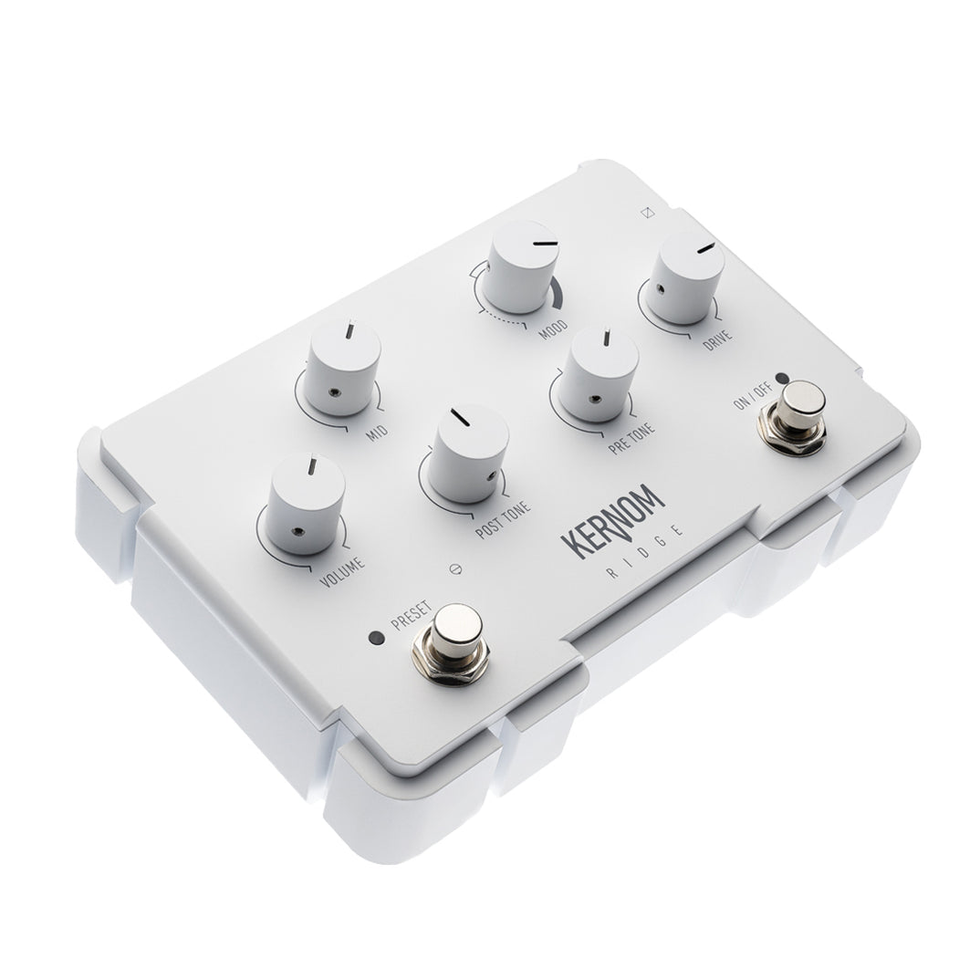 Every Overdrive You’ll Ever Need, One Pedal
Every Overdrive You’ll Ever Need, One PedalStruggling to find the perfect overdrive? Whether you need a clean boost, a transparent overdrive, or high-gain distortion, RIDGE gives you a seamless spectrum of tones—all in one pedal.
From Klon-like transparency to Tube Screamer warmth, from bluesy edge-of-breakup tones to modern high-gain saturation, RIDGE eliminates the need for multiple pedals. Dial in your perfect drive with the MOOD knob.
- The Only Overdrive You Need: From Clean Boost to High Gain
- Seamless Morphing: Effortlessly transition between legendary overdrive styles
- Advanced EQ Section– Sculpt your tone before and after the clipping stage
- MIDI & Preset Control – Save up to 128 presets and integrate seamlessly into your rig.
- Expression Pedal Input – Morph between two drive settings in real time.
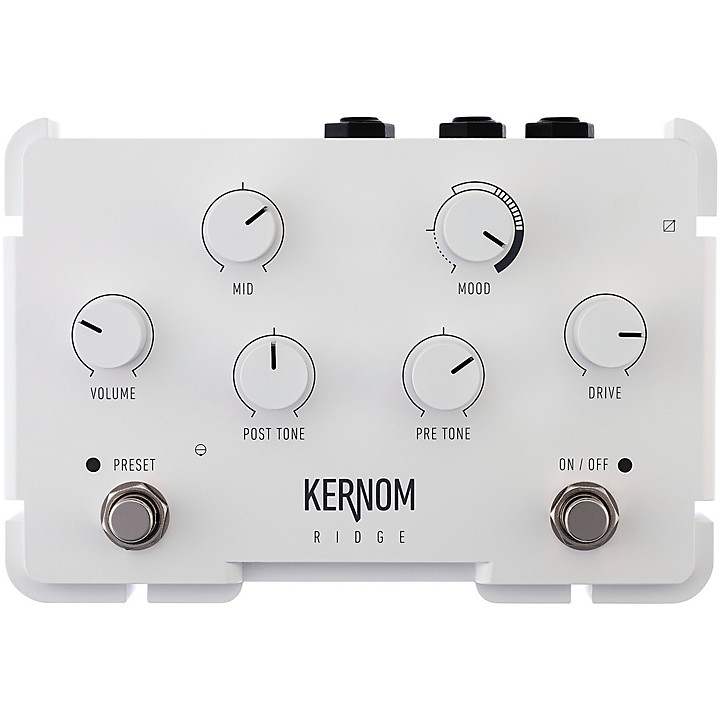
Kernom Ridge Overdrive Effects Pedal
All About Guide Tones
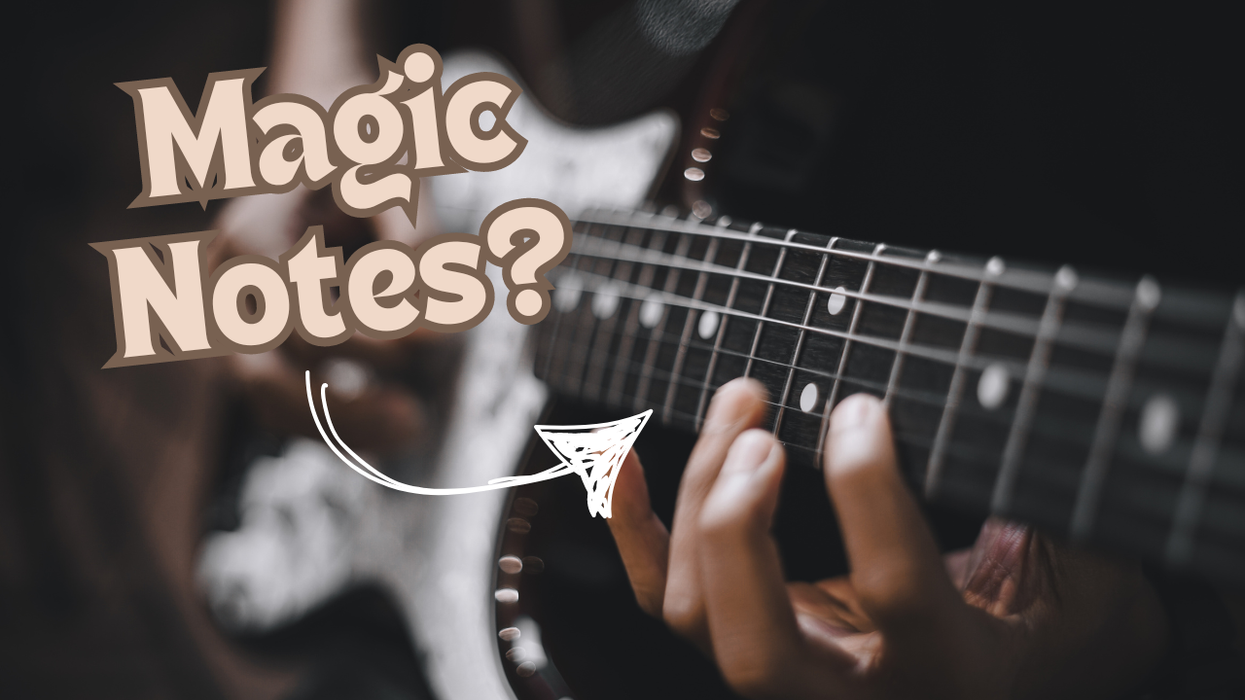
Do you feel like your solos lack focus or that there isn’t any underlying structure to your lines? Does it seem that you are wandering around the neck, hoping that what you are playing “looks like it sounds cool”? Would pushing peas around a dinner plate with a knife be more riveting than the last lick you played? If any of these statements are true, then you need some guide tones, my friend.
Guide tones, also known as target notes, are commonly used in jazz improvisation and usually refer to only the 3rd and 7th of a chord. But, for our purposes, we’re going to apply a more generous definition where all notes of a chord can be used. There are two benefits to using guide tones: They create a predetermined melodic structure that serves as a framework for your solo, and they provide an inner melody to your lines that carry the sound of the chord changes.
The first two examples show a couple of possibilities when building a guide tone melody over a ii-V-I chord progression in the key of C major. The only requirement is that the guide tones should be played on the strong beats of the measure (beats 1 and 3). Next, spell each chord to see what notes you have to work with. For our progression, our choices will come from Dm7 (D-F-A-C), G7 (G-B-D-F), and Cmaj7 (C-E-G-B). Since these examples have one chord per measure, I have chosen to use only one guide tone in each measure. But, I could have used two guide tones in a measure, one on beat 1 and the other on the beat 3. Other than what has already been discussed, there is no right or wrong way to do this. Basically, pick some chord tones, put them on the strong beat(s), and see how it sounds. Change or edit as you see fit!
Take a listen to Ex. 1. The guide tones create a descending melody that leaps up at the end. Using one note per measure, the line starts with C (the 7th of Dm7), then to B (the 3rd of G7), to G (the 5th of Cmaj7) and finally E (the 3rd of Cmaj7). Ex. 2 has a guide tone line similar to the first example, descending for the first three measures and a leap up at the end. It begins with F (the 3rd of Dm7), to D (the 5th of G7), to B (the 7th of Cmaj7), and then to E (the 7th of Cmaj7).
Ex. 3 is an eight measure progression, similar in structure to a popular jazz standard. Harmonically, the first half is a ii-V-I-IV in C major and the second half is a ii-V-i in the key of A minor. In the first six bars, there is one guide tone per measure, and then concludes with two guide tones in each of the last two bars.
Once you have decided on a framework for your solo, use scales and arpeggios to add notes before each guide tone. By doing so, you create motion in your line that sounds musical, and not like you’re choosing notes at random. Listen to Ex. 4 where each guide tone is approached from above by a scale step. Since all the chords are in the key of C, my approach notes are from the C major scale. I can also think in modal terms, where I would use D Dorian in bar 1 to approach the G7 in bar 2. Then, I can use G Mixolydian in bar 2 to approach the Cmaj7 in bar 3, and C Ionian to approach the next Cmaj7 in bar 4. Ex. 5 is the same scalar concept, this time approaching the guide tones from below.
Ex. 6 and Ex. 7 use arpeggios to approach the guide tones from above and below, respectively. I prefer to do this by using the arpeggio of the chord I am going to, not the one I am playing over. So, when I am playing over the Dm7 in the first measure, I will use the G7 arpeggio to approach the guide tone in bar 2. Then, when playing over G7 in the second measure, use the Cmaj7 arpeggio to approach the guide tone in bar 3. This concept is a little easier to see in Ex.7. Dm7 is the chord in bar 1. You approach the guide tone in bar 2 with a G, which is not in a Dm7 chord, but it is in G7.
To get longer lines, use two, three, or more notes from the scale or arpeggio when approaching the guide tones. Ex. 8 approaches the guide tone from above and below, using two and three notes from the scale. Ex. 9 shows the same approach methods, but with notes from the arpeggio.
After you get a handle on the guide tone concepts, experiment with rhythms, rests, and an ever-increasing number of approach notes. Check out Ex. 10 as an example of what is possible. It’s the guide tone line from Ex. 2 fleshed out with a mixture of scale and arpeggio approach notes of various lengths. Ex. 11 is an expansion of the guide tone line from Ex. 3. I used an increasing number of approach notes in the first half of the line. The second half is more rhythmically complex, ending with the triplet figures in the last two measures.
Applying these concepts to something more familiar, Ex. 12 is one possible guide tone melody over an A minor blues. Give it a listen to hear how the first two phrases are relatively scalar, but the last phrase has more of a “sawtooth” vibe. Ex. 13 is the completed solo, using the ideas discussed previously. Throwing everything into the guide-tone blender yielded different types of approaches combined with a variety of rhythms and rests.
Once you get a foothold, substitute different modes, scales, arpeggios, chords, and time signatures to achieve some different sonic flavors. Remember that you are restricting yourself to these few concepts in order to get a more melodic and meaningful solo. If you practice it enough, your brain will start working this way on its own!
Universal Audio Introduces Volt 876 USB Recording Studio
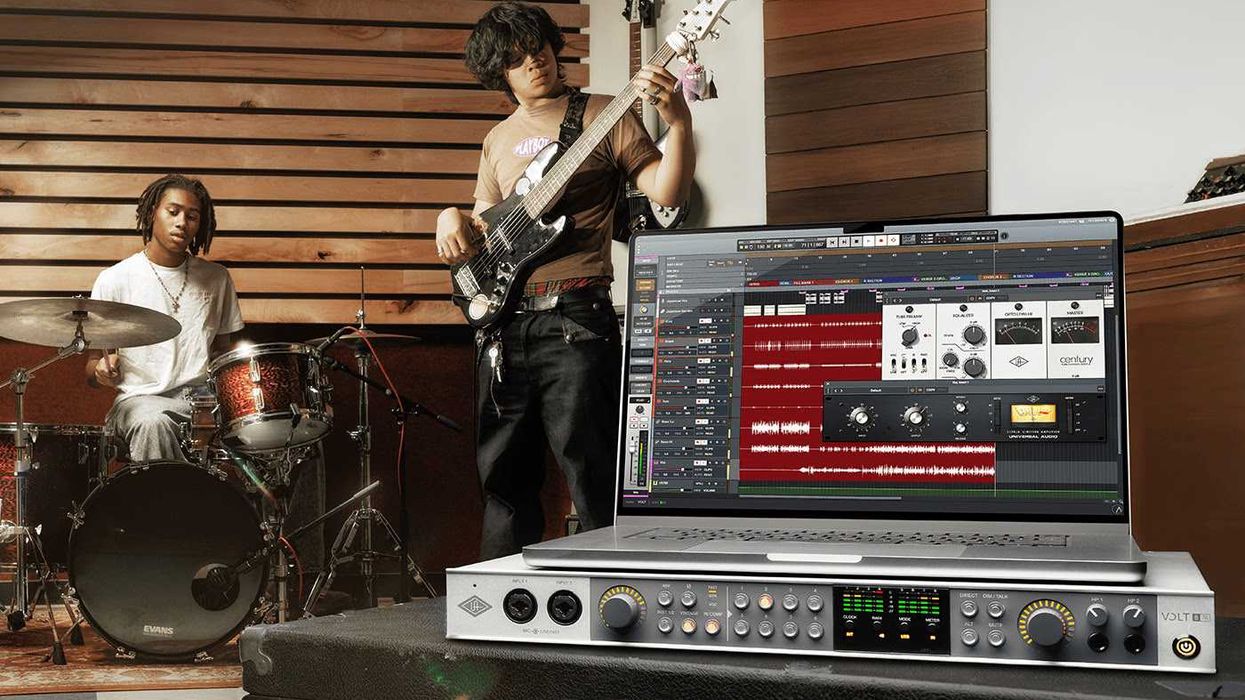
Universal Audio Inc. (UA), a worldwide leader in audio production tools, is proud to announce Volt 876 USB Recording Studio, a 24‑in / 28-out rackmount USB audio interface for Mac and Windows with eight Vintage preamps and classic 1176‑style compressors on every channel.
Delivering next‑generation 32-bit / 192 kHz audio quality, Volt 876 is designed for serious music producers and bands who want legendary UA analog sound, a curated suite of UAD plug‑ins, and powerful integration with UA's groundbreaking LUNA Digital Audio Workstation.
“Volt 876 is all about giving musicians and producers a classic UA analog studio sound, with more power to create together,” says Bill Putnam Jr., CEO of Universal Audio. "Beyond its fast, push-button tone shaping, it offers a level of digital integration with UAD plug‑ins and LUNA that we believe is the fastest path to creating great‑sounding music."
Volt 876 USB Recording Studio - $999 MAP USD

Built by the same team behind the award-winning Apollo interfaces, Volt 876 is a complete recording system with powerful hardware‑software integration, including instant session recall, AI‑powered tools in UA’s LUNA DAW, software remote control, and the premium UAD Producer Suite plug‑in bundle — giving musicians and creators everything they need to capture and shape music with authentic analog tone.
Key Features:
- 24‑in / 28‑out rackmount USB audio interface with eight onboard Vintage preamps and classic compressors — inspired by UA’s iconic 610 console and 1176 limiter
- Next‑generation 32‑bit / 192 kHz audio conversion on Mac, PC, iPad, and iPhone
- Includes LUNA Digital Audio Workstation with unlimited track count and smart AI-powered tools like Voice Control, Instrument Detection, and Tempo Listen
- Features UAD Producer Suite plug‑in bundle with Teletronix LA‑2A and UA 1176 compressors, Pultec EQs, PolyMAX Synth, Showtime ’64 Guitar Amp, and more
- Assistive Auto‑Gain, full session recall of front‑panel settings, and two low‑latency cue mixes with talkback using UAD Console app
- ADAT connection allows aggregation of up to 3 Volt 876 interfaces, as well as integration with Apollo and other digital audio equipment
Volt 876 USB Recording Studio is now available for purchase from retailers worldwide.
Is Music Telepathy Real? | Last Call with John Bohlinger
When playing, try to bring the resistance down to zero.
Reverend Introduces New Kyle Shutt Mark 2 Signature Electric
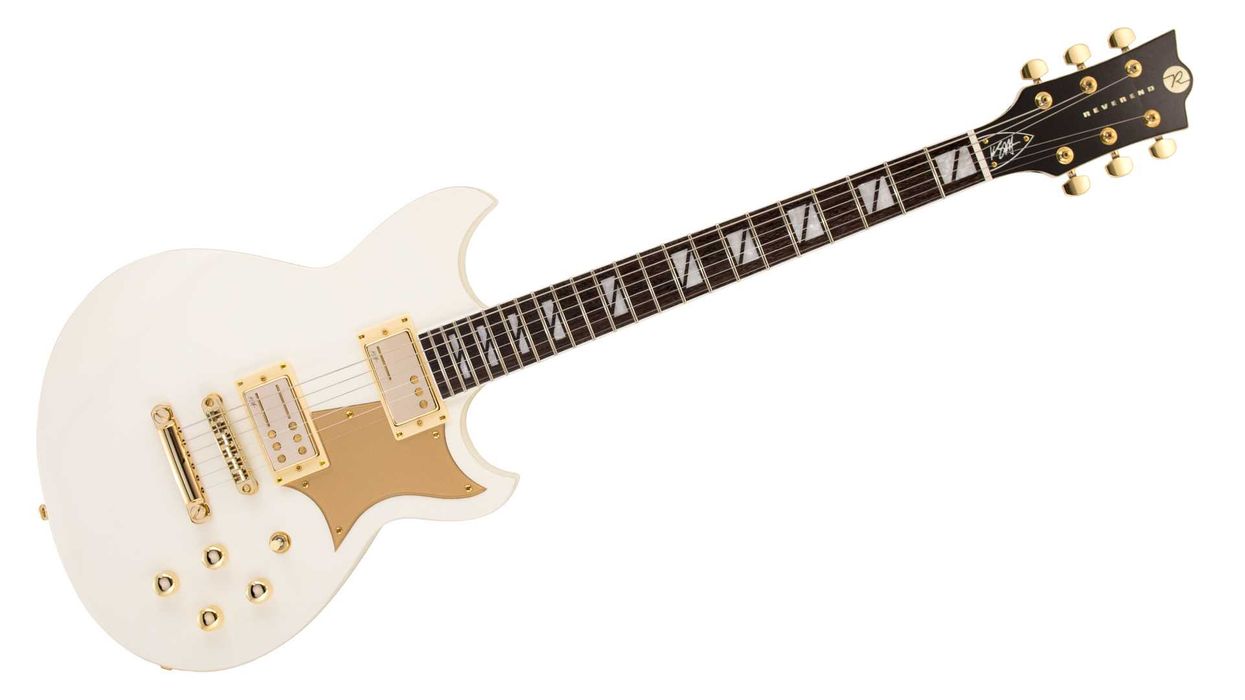
Reverend Guitars has launched a new generation of the company’s Kyle Shutt Signature solid body electric: the Reverend Kyle Shutt Mark 2 covers an extraordinarily broad range of sonic ground…just like its namesake artist.

As a founding member of The Sword – a band that has toured worldwide with acts such as Metallica, Lamb of God, Clutch, and Opeth – Shutt’s playing deftly shifts between heavy fuzz, classic crunch, and open cleans. Since the band’s 2003 inception in Austin, TX, The Sword has blown away audiences with their unique brand of stoner rock-meets-doom metal-meets-70s riff rock.
Shutt’s new Reverend model includes a pair of Railhammer Kyle Shutt Signature pickups that deliver a plethora of tones with ease. Outfitted with custom Diver Flag fret marker inlays and gold hardware, this guitar looks as good as it sounds.

It also includes a special Reverend feature for shaping your tone: the guitar’s Bass Contour control knob is a passive bass roll-off that’s perfect for tightening up the low end, or re-voicing the pickups. It can make a humbucker sound like a single-coil, or give a P-90 that classic twang. With this Bass Contour control you’ve got variable pickup voicing at your fingertips.
Other features include:
- Solid Korina body available in Ice White or Midnight Black finish
- Railhammer Kyle Shutt Signature bridge and neck pickups
- Electronic controls for bridge pickup volume, neck pickup volume, tone, bass contour control, and 3-way pickup selector
- Three-piece Korina neck with 22 frets, 24 3/4" scale length, medium oval neck profile and rosewood fingerboard with 12” radius
- Hardware includes Reverend Pin-Lock tuners and a tune-o-matic style bridge with stop tail piece
The Reverend Kyle Shutt Mark 2 electric carries a street price of $1499 and is available through any Reverend authorized dealer. For more information visit reverendguitars.com.
MXR Honors MC5’s Wayne Kramer with Jail Guitar Doors Drive
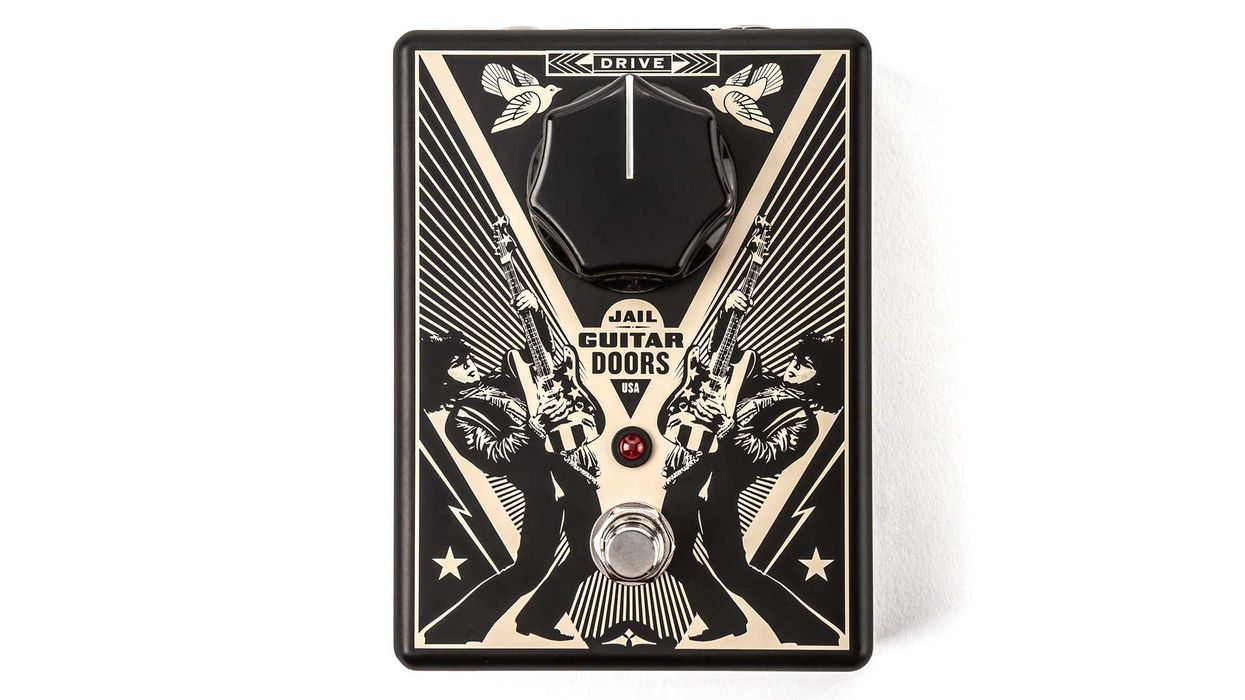
You’d be hard-pressed to find a punk or garage rocker who was not influenced by the raw tones that Wayne Kramer pitched into the guitar universe through MC5’s iconic recordings in the early 1970s. MXR teamed up with lifelong MC5 fan Johnny Wator of Daredevil Pedals to capture that gritty, groundbreaking sound in a compact, straightforward stompbox. The result is a pedal that delivers a huge rock ’n’ roll kick in the pants—just like Wayne’s music.
The MXR Jail Guitar Doors Drive cranks out powerfully rich tones reminiscent of two dimed-out 100-watt amp stacks. Johnny combined his Drive-Bi Dual Gain Distortion with the MXR Micro Amp to create two separate gain stages, one cascading into the other. A single knob controls the outputs of both circuits, and as the volume is raised, more gain is fed from the first stage into the second. The EQ range is wide and balanced with all the definition you need to cut through a loud live mix with an unrestrained roar thick with harmonics. And it’s all passed the ultimate test—an early prototype of this pedal, delivered to an MC5 recording session, made it onto the album.
We figured this pedal should look as great as it sounds, so we enlisted street art pioneer Shepard Fairey to create a visual representation of the pedal’s rebellious tones.
A limited run, a majority of the proceeds from the sale of each pedal will be donated to Jail Guitar Doors USA, a nonprofit organization co-founded by Mr. Kramer, his wife Margaret, and Billy Bragg. For over fifteen years, JGD's efforts have included programs to help incarcerated individuals heal and grow through music in over two hundred facilities nationwide. In 2021, JGD opened the doors to their youth-driven C.A.P.O Center (Community, Arts, Programming & Outreach) in the heart of Los Angeles to aidsystem-impacted young men and women in the exploration of personal healing through the art of self-expression. To make a further donation, please visit jailguitardoors.org.
MXR Jail Guitar Doors Drive highlights:
- Special limited edition
- Includes numbered certificate of authenticity
- Recreates the raw tones that Wayne Kramer used in MC5
- Reminiscent of two dimed-out 100-watt stacks
- Two cascading gain stages—Daredevil Drive-Bi Dual Gain and MXR Micro Amp
- Single knob increases both gain and volume for a thick, unrestrained roar
- Custom artwork from Shepard Fairey
- Co-designed with Daredevil Pedals proprietor Johnny Wator
- Majority of proceeds go to nonprofit Jail Guitar Doors USA
Availability
The MXR Jail Guitar Doors Drive is available now at $199.99 street/$285.70 MSRP from your favorite retailer.
Gigahearts FX Launches Mashed Voltaire Deluxe and Hyper Soup Fuzz Pedals
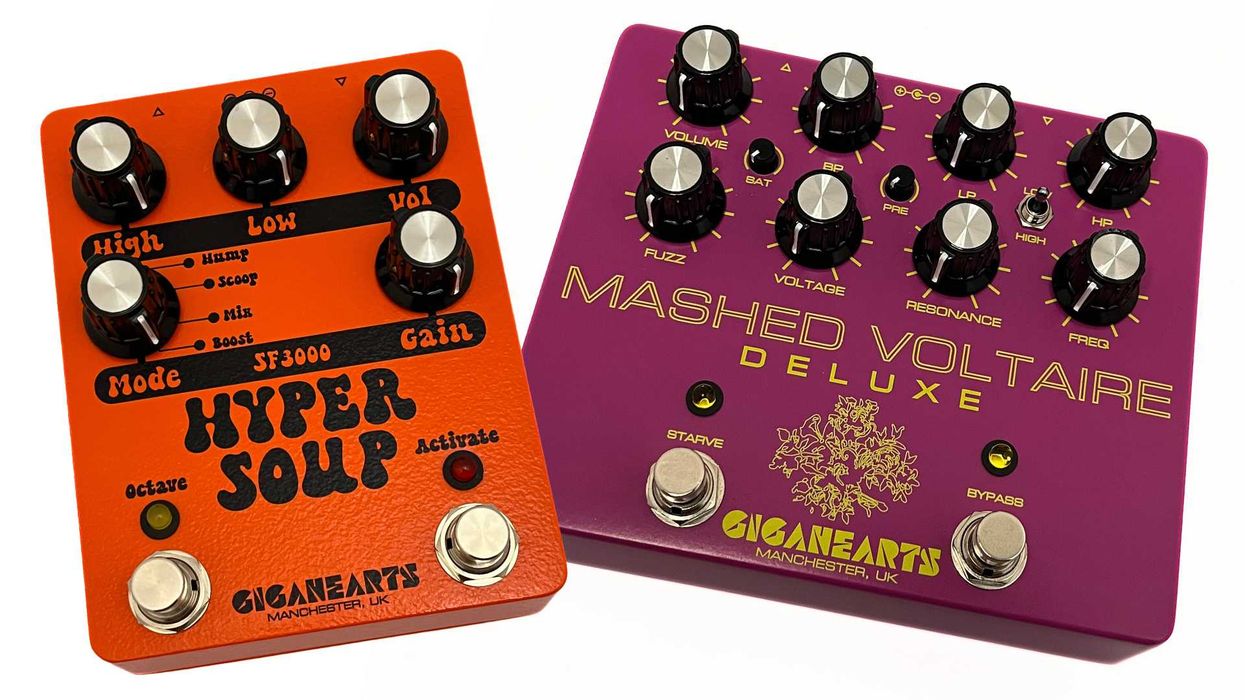
Adding to the company’s line of boutique effects, Gigahearts FX has introduced two new fuzz pedals: the Hyper Soup and Mashed Voltaire Deluxe bring unique tonal variations, circuit refinements and performance-driven controls to guitarists seeking to expand their distortion and fuzz palate.
Designed to appeal to musicians who want to push their tone into new directions, and value genuinely hand-soldered and wired construction, both pedals build upon classic and well-loved circuits by bringing the feature-set into the 21st century.
- Wildly expanded take on the “Violet Rams Head” circuit
- Eleven external controls to fully sculpt and fine-tune your sound
- Three band EQ (HP/BP/LP) feeding a dual-mode synthesizer-style resonant filter offering unlimited tonal variation from lo-fi to cocked-wah and full-on fat fuzzed out bliss
- Footswitch-activated “starve” circuit limits voltage to the second transistor stage, bringing control over gating, dying-amp sounds, octave-glitches and textural artifacts
- Comprehensive adaptation of the popular “Super Fuzz /Hyper Fuzz” circuit
- Four-way rotary control, offering three fuzz modes and a boost mode
- Footswitchable upper-octave, essentially doubling the number of fuzz tone options
- Powerful Two-band High and Low active EQ controls
Both pedals feature Gigahearts’ signature hand-made construction, with high quality dual-layer PCBs, all through hole parts and hand soldering/wiring throughout. The pedals utilize 9-volt DC from an external power supply using standard 2.1mm tip negative (no battery compartment) and feature true bypass mechanical switching.
Mashed Voltaire Deluxe fuzz is priced at $239 USD / £175 GBP and Hyper Soup is $213 USD / £155 GBP available directly from www.gigaheartsfx.com, shipping worldwide, with free UK shipping and DDP duties paid to the USA.
Jared James Nichols Releases New Single "Ghost"
Today, guitar powerhouse JARED JAMES NICHOLS is proud to release his new single, "Ghost," marking his first new music since recently signing with Frontiers Music Srl. The new track arrives accompanied by an official lyric video, available to view below.
In addition, JARED JAMES NICHOLS will be embarking on his European and UK headline tour starting November 5th in Valencia, Spain, at Loco Club and concluding December 6th in London, UK at The Underworld.
On the new single, JARED JAMES NICHOLS comments:
"‘Ghost’ was written with a very good friend of mine, Grammy-winning producer and epic guitarist Tyler Bryant. We have a synergy whenever we get together; it’s infectious, and things happen quickly. Tyler jumped behind the drums, and I started jamming the verse groove with the guitar. Within minutes, we had carved out the entire bones of the song in an old-school way of a jam.
"Lyrically speaking. ‘Ghost’ is something we can all relate to. It’s all about trying to live up to the voices inside your head, staying away from the insecurities and fear we all have running in our minds. It is about facing your fears, accepting the mind wars, and ultimately conquering them."
He continues, "‘Ghost’ was recorded with super producer Jay Ruston at Dave Grohl's 606 Studios in Los Angeles, California. Working with Jay is like breathing air; things come out so naturally and fresh. We share a common vision that is always hard to find when working with a producer. We put a lot of trust in each other, which means we care about nothing less than what is best for the song. As a band, our adrenaline was pumping…! Recording this song at such a legendary studio really sparked the fire and energy that you hear in the track."
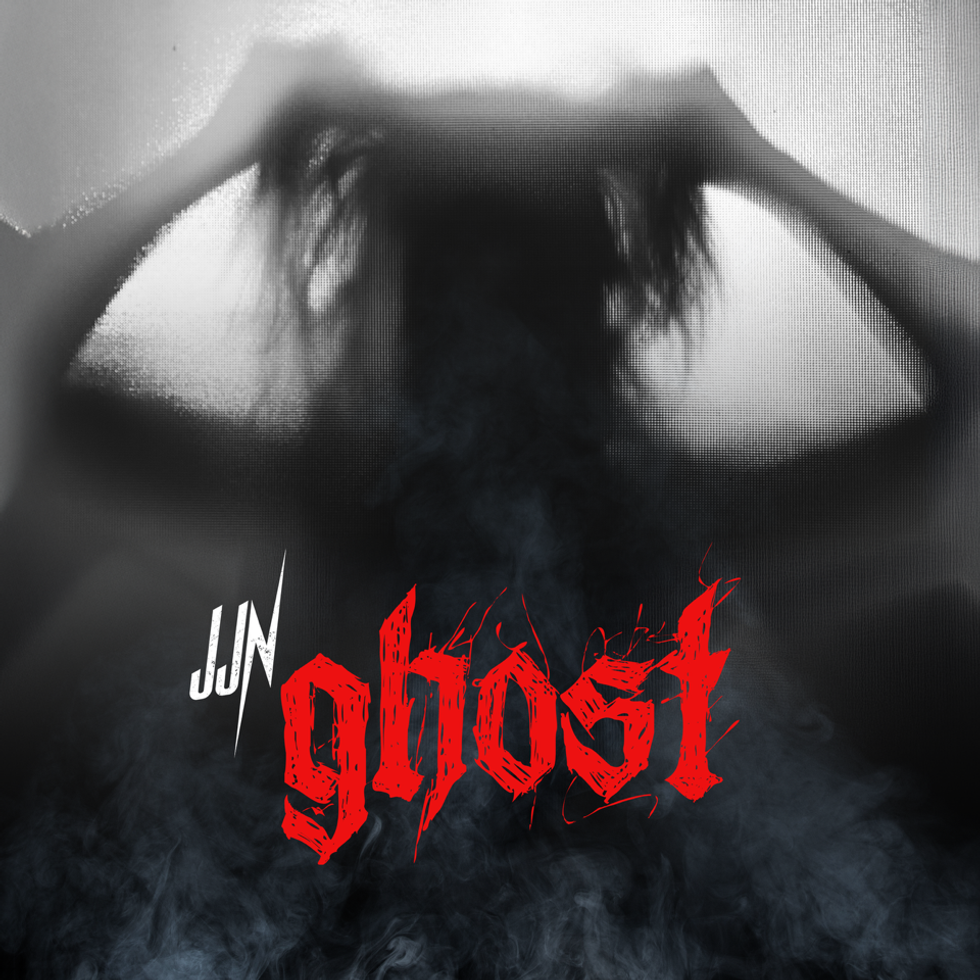
Stream / Listen HERE
Armed with nothing more than his signature Gibson Les Paul, a cranked amp, and a microphone burning hot, JARED JAMES NICHOLS lives the Blues the way it was meant to be lived - tough by design, raw in delivery, and authentic to the core. The Wisconsin-born, Nashville-based singer, songwriter, and guitarist unleashes unapologetic rock ’n’ roll, his voice hitting with grit and soul while his fretwork roars with fire and fury.
Celebrated by American Songwriter, Guitar World, and Relix, NICHOLS has already tallied millions of streams and built a devoted following online. Gibson Guitars recognized his impact by naming him one of only four Global Brand Ambassadors worldwide - a rare honor that cements his standing as one of today’s most vital guitar slingers.
Now preparing his fourth - and most defining - album, NICHOLS calls this era “JJN Mach II.” Written and inspired by his post-pandemic touring experiences and new home base in Nashville, the record showcases his growth as a singer and songwriter, while taking his guitar playing to explosive new heights.
NICHOLS’ journey has not been without hardship: cancelled tours, collapsed labels, breakdowns on the road, even a freak accident that left him with 20 screws in his arm. Yet every challenge has only fueled his drive and deepened the legend of his self-proclaimed “Blues Power.”
With Frontiers Music Srl now by his side, JARED JAMES NICHOLS is ready to bring his uncompromising rock ’n’ roll to the world. The time has come for his name to be known in every household where true rock is alive.
JARED JAMES NICHOLS - Tour Dates 2025
Tickets Available HERE
European Headlining Tour:
Nov 5 - Valencia, Spain @ Loco Club
Nov 6 - Barcelona, Spain @ Sala Razzmatazz 3
Nov 7 - Madrid, Spain @ Teatro Magno
Nov 8 - Aiguaviva, Spain @ Ca La Dolo (La Torrentera)
Nov 9 - Villava, Spain @ Sala Totem Aretoa
Nov 11 - Barberaz, France @ Le Brin de Zinc
Nov 12 - Paris, France @ Cafe de la Danse
Nov 14 - Hamburg, Germany @ BETTY (ex-headCRASH)
Nov 15 - Joldelund, Germany @ Gerd’s Juke Joint
Nov 16 - Cologne, Germany @ Yard Club
Nov 18 - Ahrensburg, Germany @ Stromarnschule
Nov 19 - Milan, Italy @ Legend Club
Nov 21 - Meppen, Germany @ Rockpalast Meppen
Nov 22 - Hoofddorp, Netherlands @ Cpunt
Nov 23 - Dordrecht, Netherlands @ Bibelot
Nov 25 - Wattrelos, France @ La Boite à Musique
UK Headlining Tour:
Nov 26 - Southampton @ The 1865
Nov 27 - Southend-on-Sea @ Chinnerys
Nov 29 - Manchester @ Manchester Academy
Nov 30 - Wolverhampton @ KK’s Steel Mill
Dec 1 - Bristol @ Thekla
Dec 2 - Glasgow @ The Garage
Dec 3 — Bradford @ Nightrain
Dec 4 - Nottingham @ Rescue Rooms
Dec 5 - Brighton @ Volks
Dec 6 - London @ The Underworld
Devon Eisenbarger [Katy Perry] Rig Rundown
The in-demand gunslinger brings a load of silverware to arenas across the world.
Devon Eisenbarger, session ace and touring shredder for stars including Chappell Roan and One Direction’s Zayn Malik, met up with PG’s Chris Kies at Nashville’s Bridgestone Arena before hitting the stage with Katy Perry to show off the sleek 6-string rig she’s using on Perry’s Lifetimes tour.
Brought to you by D’Addario.
Splitting Up
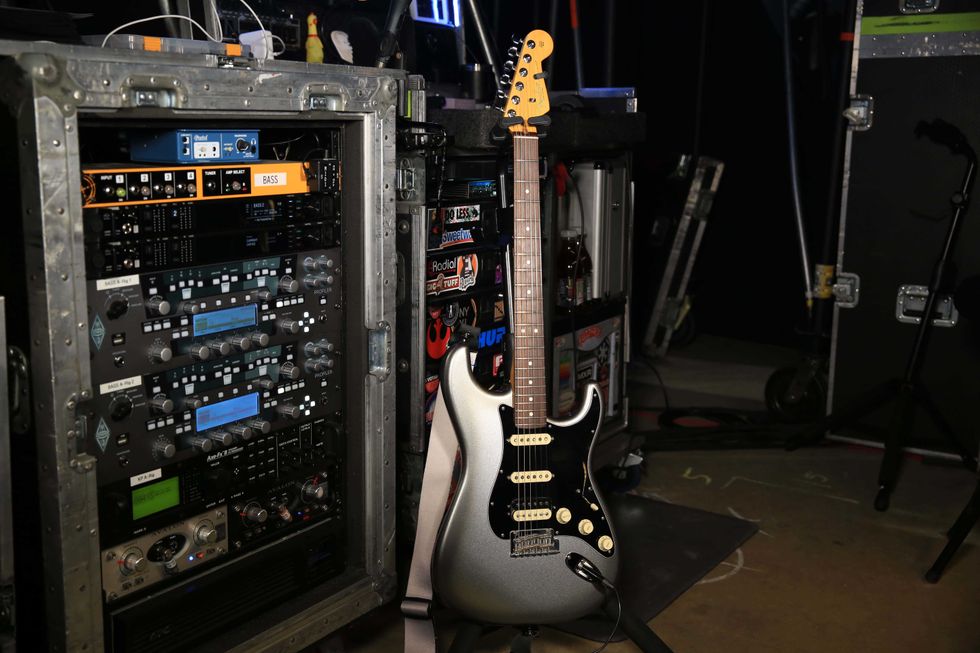
Eisenbarger cut her teeth on a Stratocaster, and its sonic character still feels like home. She filmed a demo for Fender using this American Professional II Strat with a coil-splitting humbucker in the bridge—the best she’s heard so far. This one and all other electrics run D’Addario strings (.010–.046).
Fiery Fiore
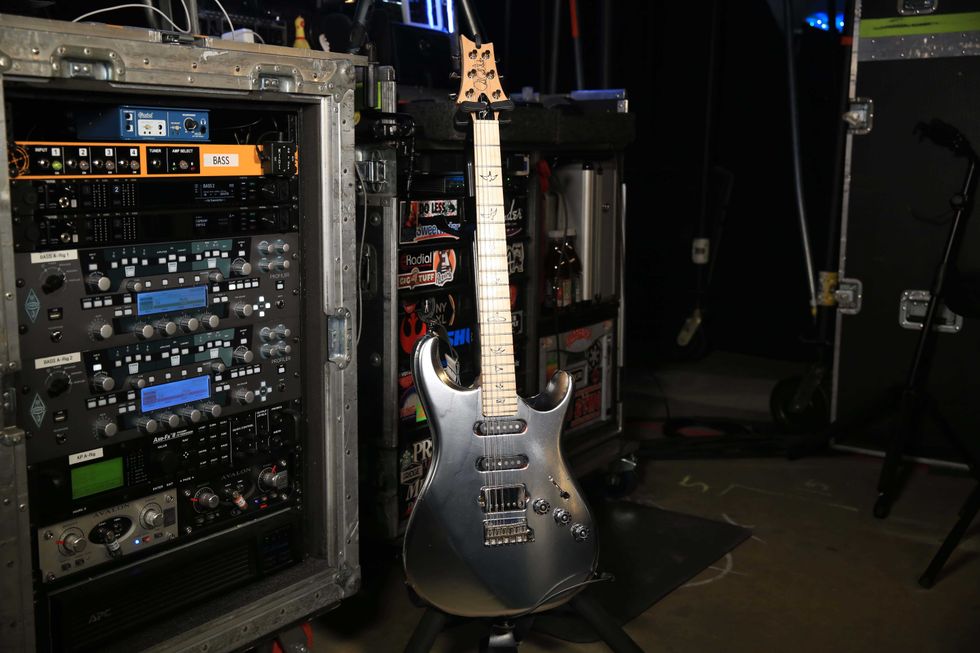
Eisenbarger just scored this PRS Fiore before this tour. It has a beefier, slightly more midrange-y sound than the Strat.
Silver Surfer
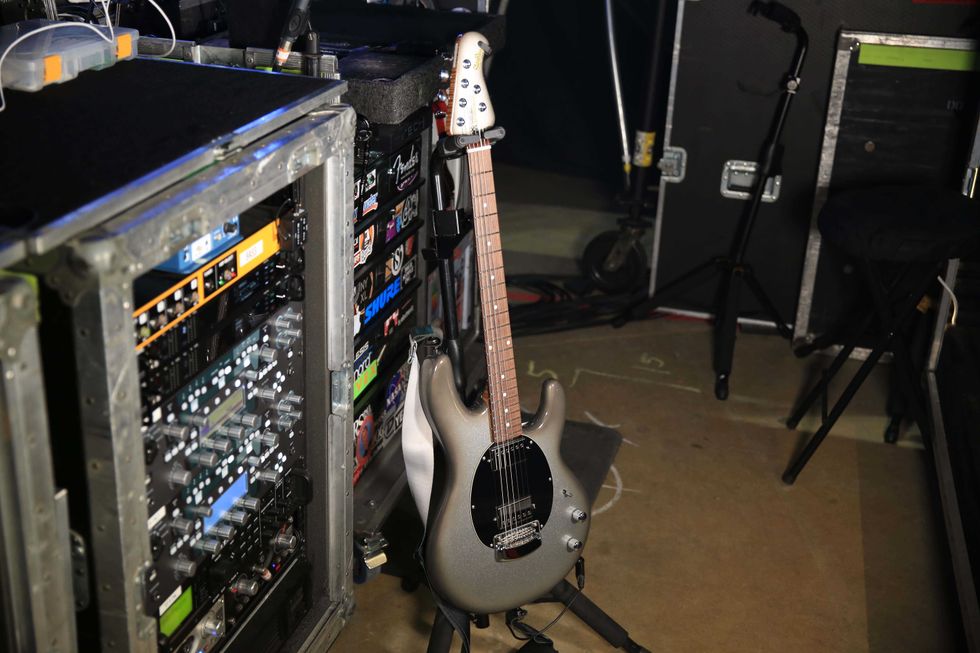
This Ernie Ball Music Man StingRay II, designed in collaboration with Cory Wong, was made for Eisenbarger just before this run of shows.
Saintly Signature
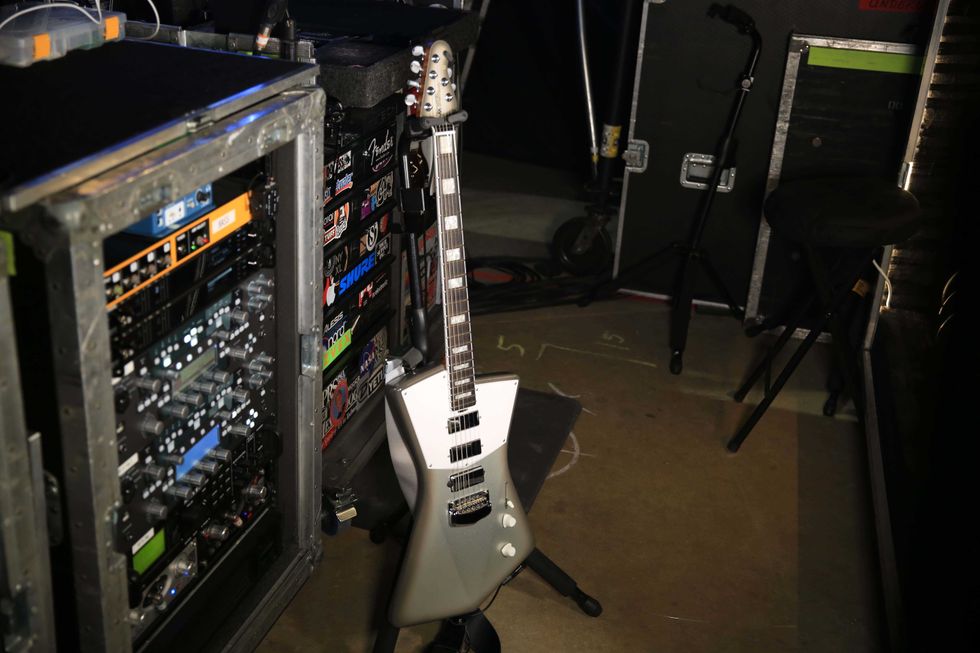
Eisenbarger uses this Ernie Ball Music Man St. Vincent Signature for “I Kissed a Girl.”
Taped-Up Taylor
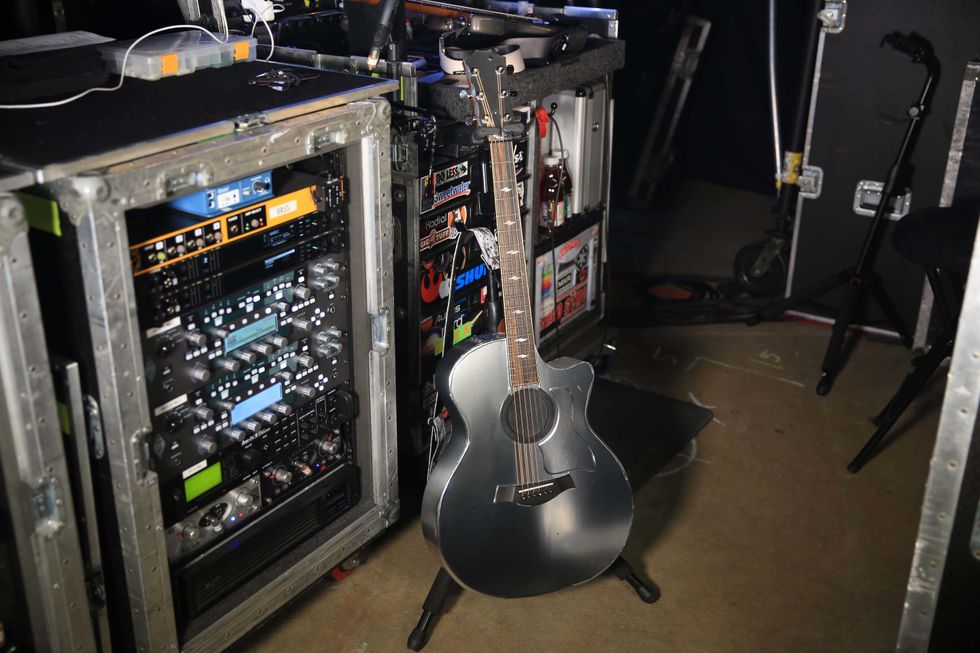
This Taylor 814ce, wrapped in silver tape, comes out for a mid-show acoustic set.
Devon Eisenbarger’s Rack Setup
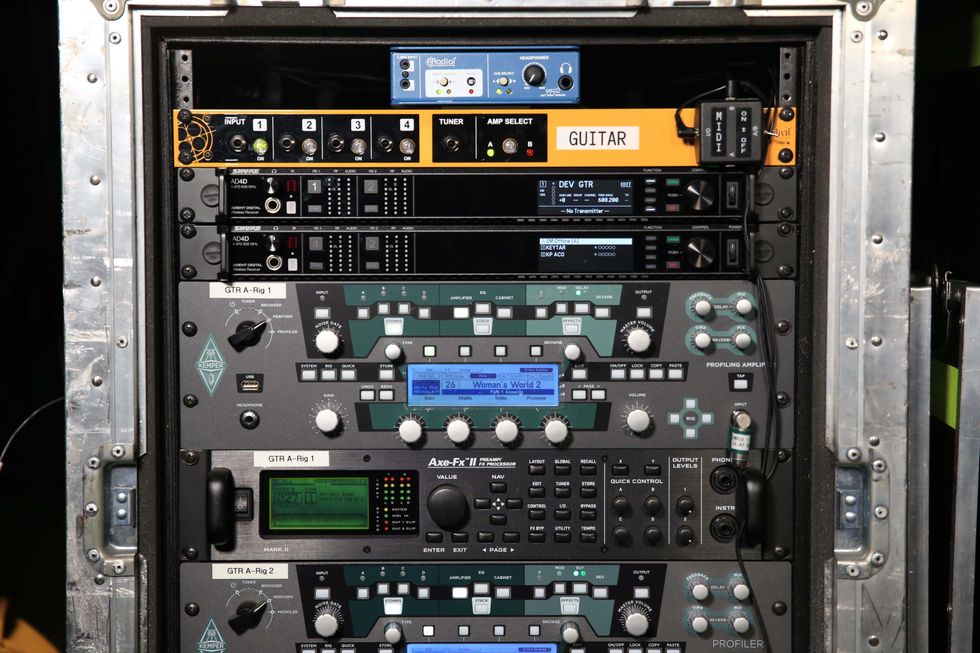
Eisenbarger runs an all-digital rig, contained in this rack backstage. The key pieces are a Radial JX42, two Shure AD4Ds, a Kemper Profiling Amplifier, and a Fractal Axe-Fx. The Kemper runs a SELAH SOUNDS pack of profiles and impulse responses.
With no onstage monitors, Eisenbarger’s signal runs only to in-ear monitors and front of house.

Fender American Professional II Strat
Ernie Ball Music Man St. Vincent
Sound Semiconductor Intros New Generation Bucket Brigade Delay Chip
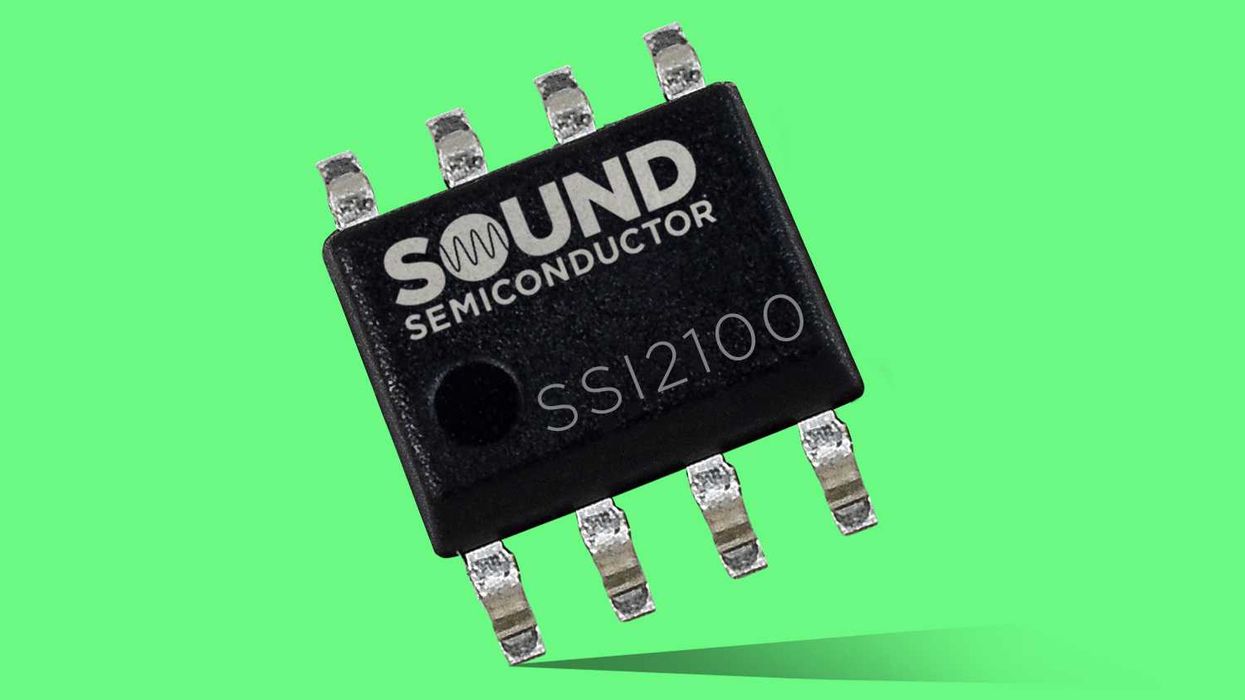
The SSI2100 is a 512-Stage BBD that offers a wide range of delay times using clock frequencies from 1kHz to over 2MHz. Special care was taken to faithfully reproduce the bucket brigade chain to preserve “mojo” of these quirky and beloved analog delay circuits.
Sound Semiconductor took advantage of a modern CMOS IC process that not only permits reduced chip die size but also allowed addition of new features. The SSI2100 includes an on-chip clock driver with anti-phase outputs that accepts a single TTL/CMOS 5V or 3.3V input that can be easily generated from a wide range of sources, negating the need for a traditional companion clock generator IC. In addition, the SSI2100 incorporates a clock tree to distribute the two anti-phase clocks throughout the chain for improved fidelity. The SSI2100 also internally provides the legacy “14/15 VGG“ supply voltage needing only an external capacitor.
A novel circuit (patent pending) provides noiseless gain allowing easy connection of multiple SSI2100’s for longer delay times without having to recalibrate inputs and outputs. An additional benefit to daisy-chaining is access to intermediate feedback taps for interesting reverb and other psychoacoustic effects.
The SSI2100 is available in a compact SOP-8 package, and believed to be the first BBD IC to be offered in a surface mount package. Pricing is $1.08 at 1k pieces, with samples available to qualified OEM’s. Production stock is available now.
"Before we could even start development in earnest of the SSI2100, we had to fully understand how these unusual devices work,” stated Neil Johnson, designer of the SSI2100. "From there it became a very fun project to complete.”
Sound Semiconductor is composed of musicians and technologists with the goal of developing affordable, high-performance integrated circuits for music creation. For more information, please visit www.soundsemiconductor.com.
MTD Introduces Kingston KNSJ5 Norm Stockton Signature Saratoga 5 String
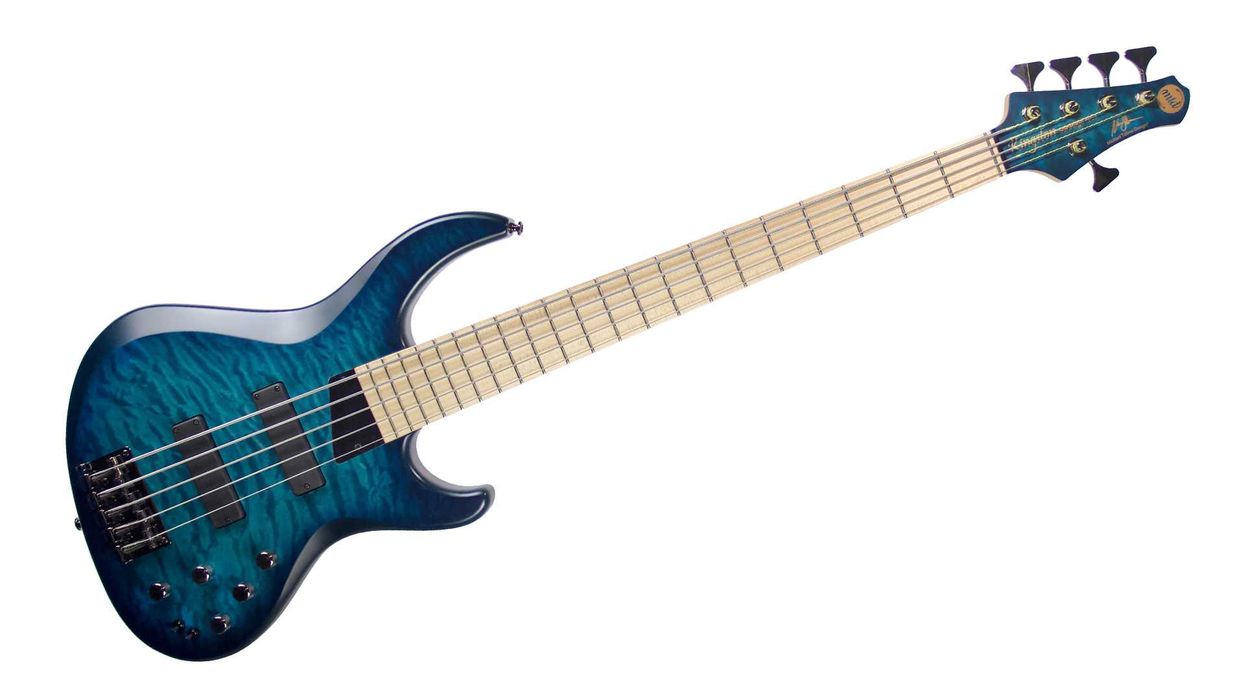
Building on the success of MTD’s USA Norm Stockton Signature Saratoga, the new KNSJ5 brings high end appointments and renowned playability to a more affordable price range.
Built to Norm Stockton’s specs for a service life equally at in the studio and on the road, the KNSJ5 marries USA Bartolini pickups and a new USA Bartolini Preamp to MTD Kingston Saratoga’s signature neck profile, fretwork, iconic body shape and hardware. The new preamp designed in conjunction with Bartolini gives players an unparalleled playing experience.
Features include:
- 35” Scale Maple neck with Maple fingerboard for a more focused B string
- MTD Asymmetrical neck profile for less fatigue and a more comfortable grip
- Custom NSJ Preamp from Bartolini with Shiftable 450/850hz Mid band and Active/Passive switch
- Custom MTD Split Coil USA Bartolini Pickups
- Alder body with Quilted Maple top
- Quick Release Bridge
- Hipshot Licensed Ultra Lite tuning machines
- Dunlop Super Bright Stainless Steel Roundwound Strings w/ tapered B: 45-130
“I had high expectations for the Kingston NS,” says Norm Stockton, “and it absolutely blew them away! Gorgeous looks, spectacular playability, and TONE for days. Everyone who’s played it has been floored.”
This new model represents a shift in how MTD Kingston basses are assembled. While every single Kingston model received a full setup – including a fret level/dress, intonation, and action adjustments – moving forward all Kingston series instruments equipped with Bartolini electronics will have those electronics installed in company’s Kingston, NY facility by the MTD team.
The KNSJ5 is available in Satin Blue Burst and has a street price of $2099. For more information visit mtdbass.com.

